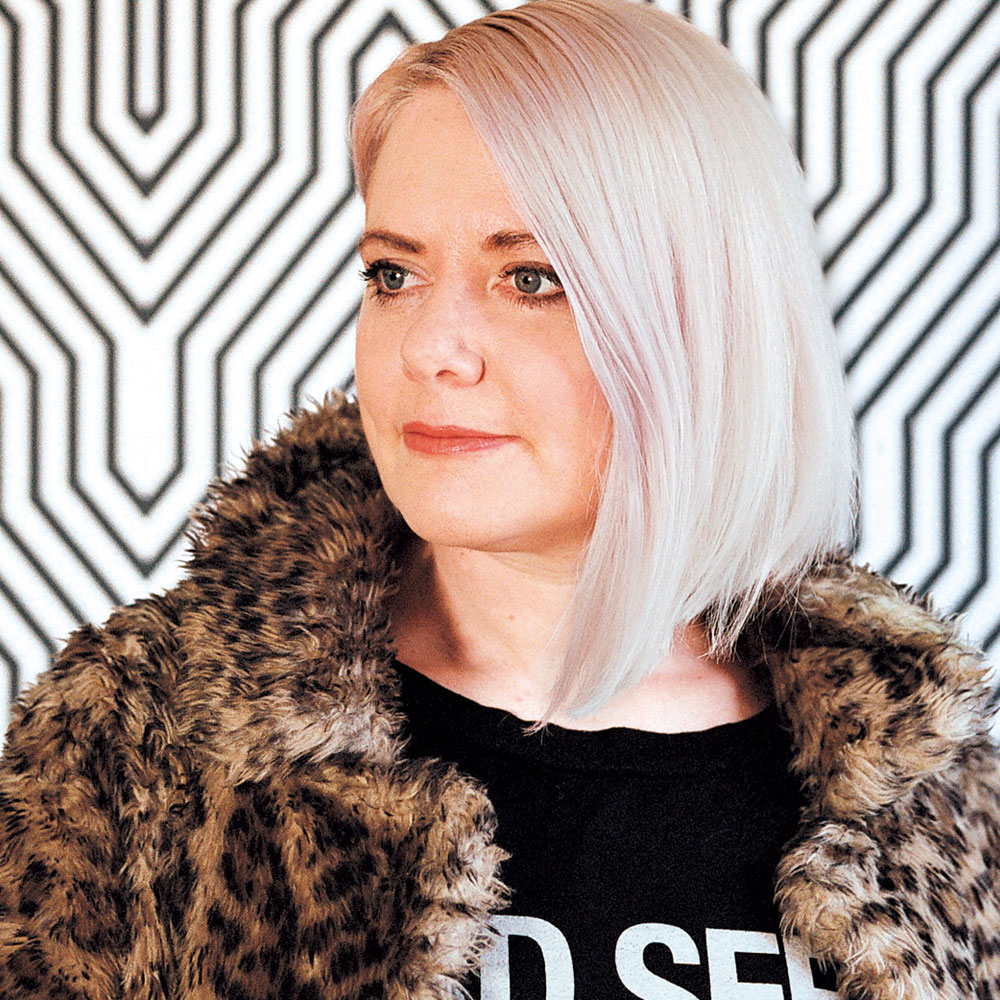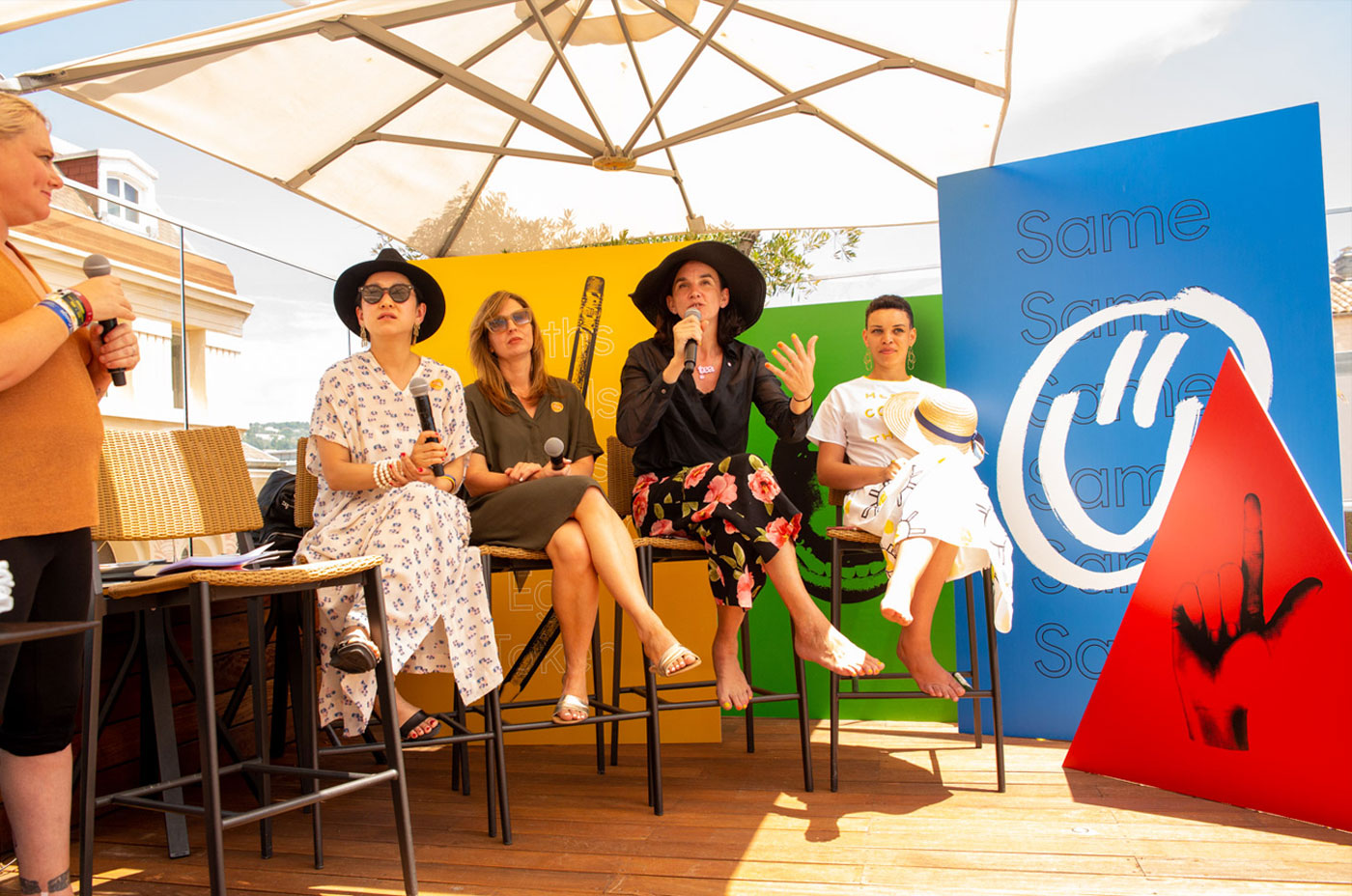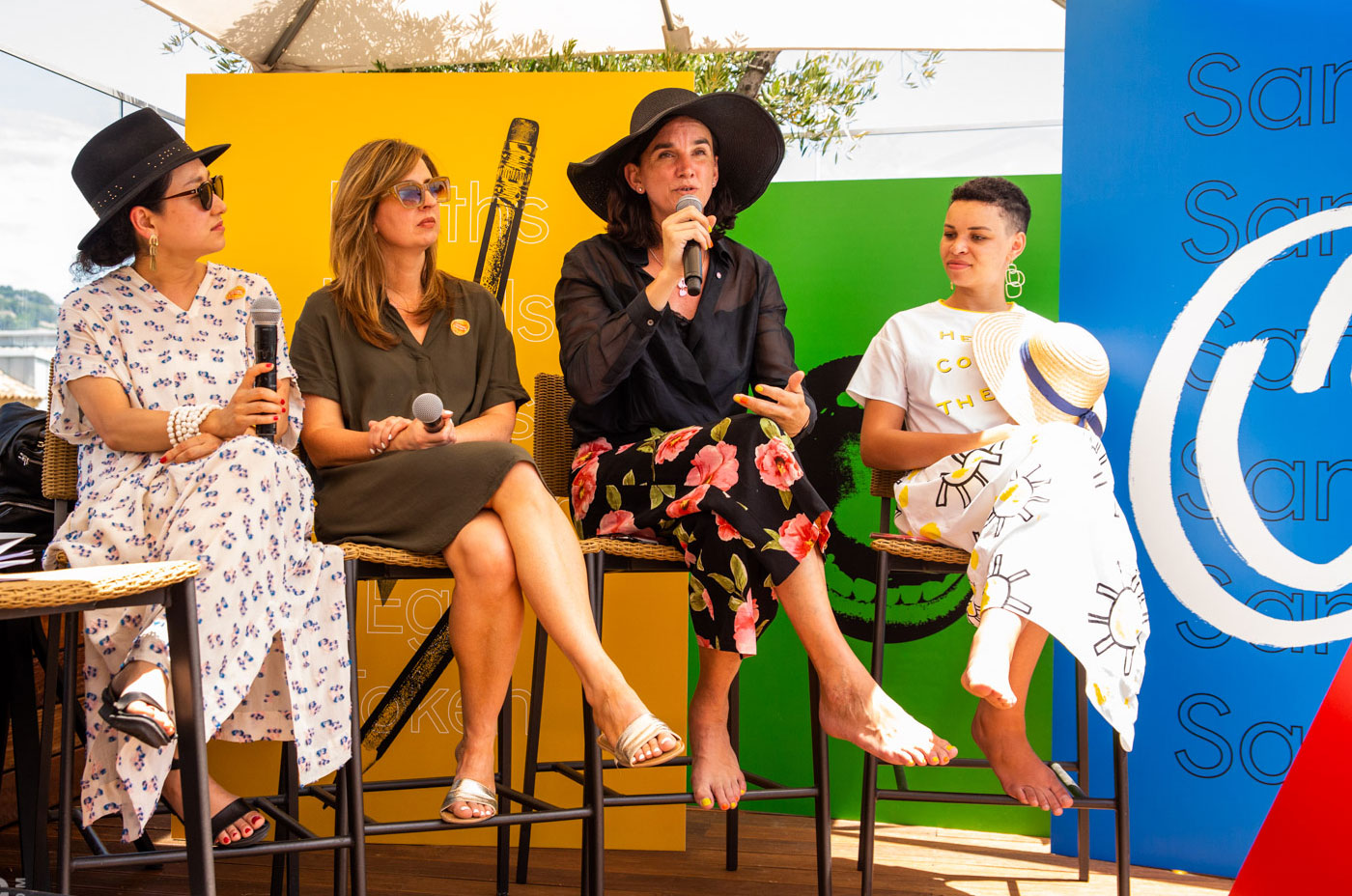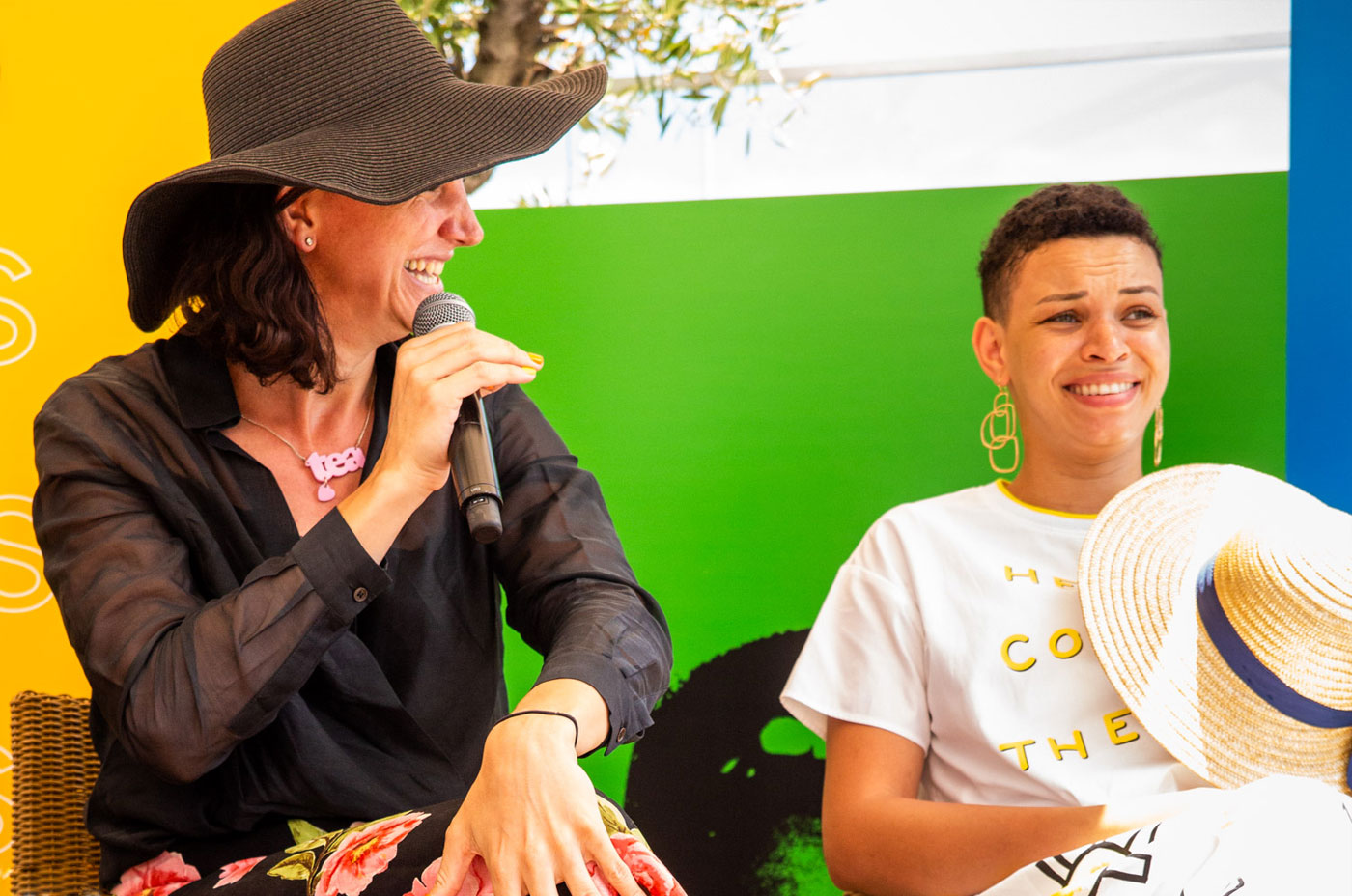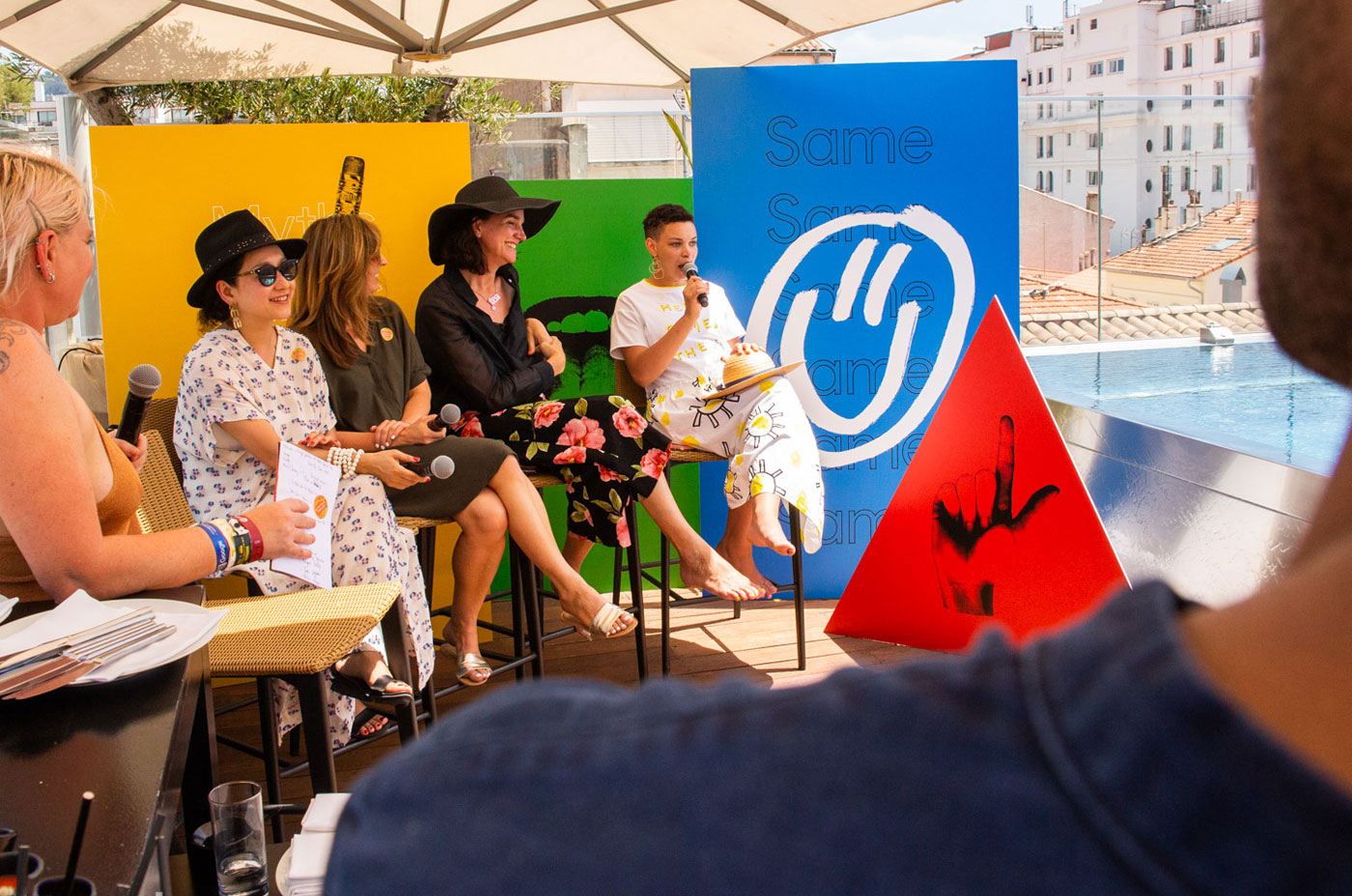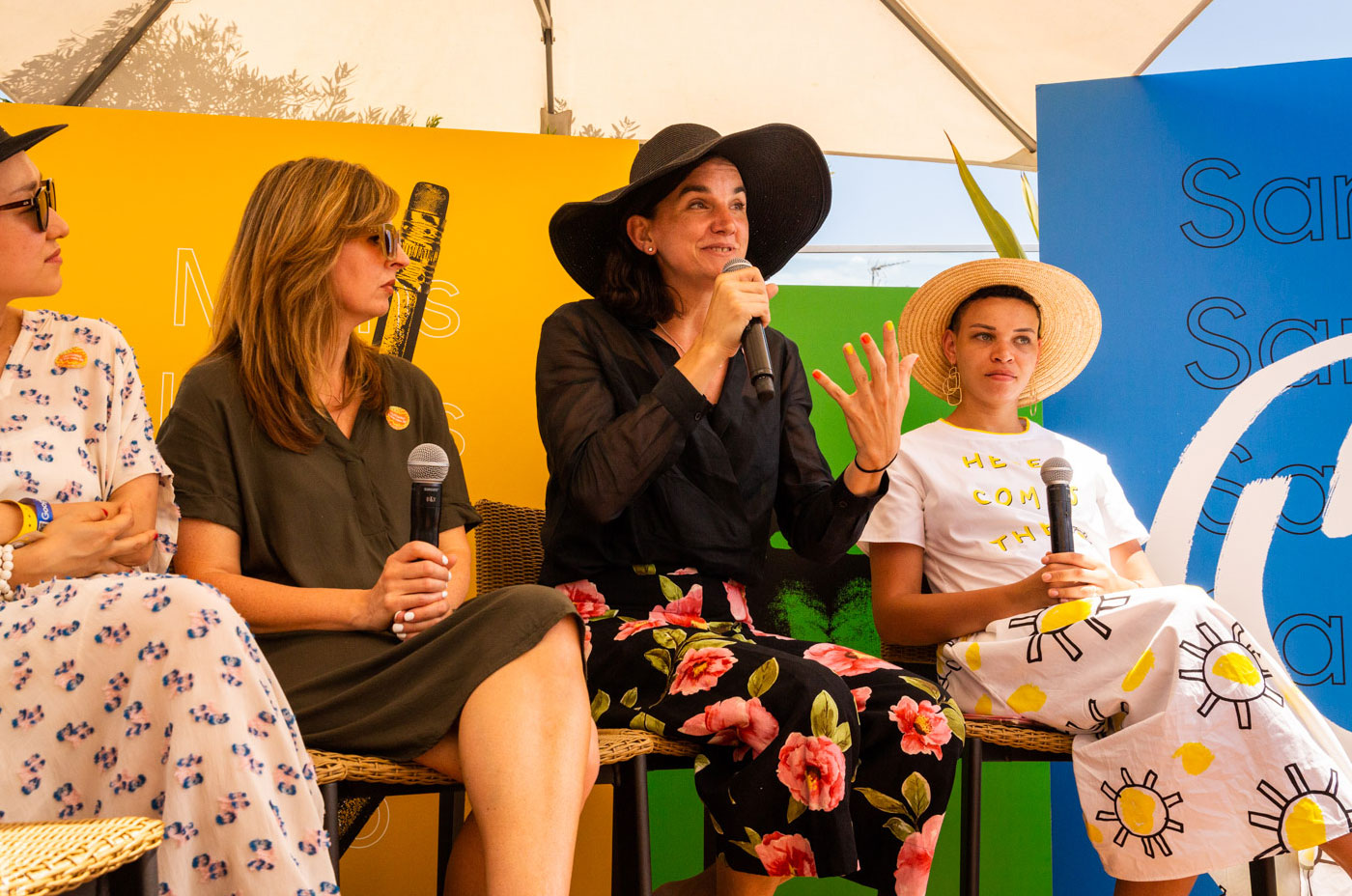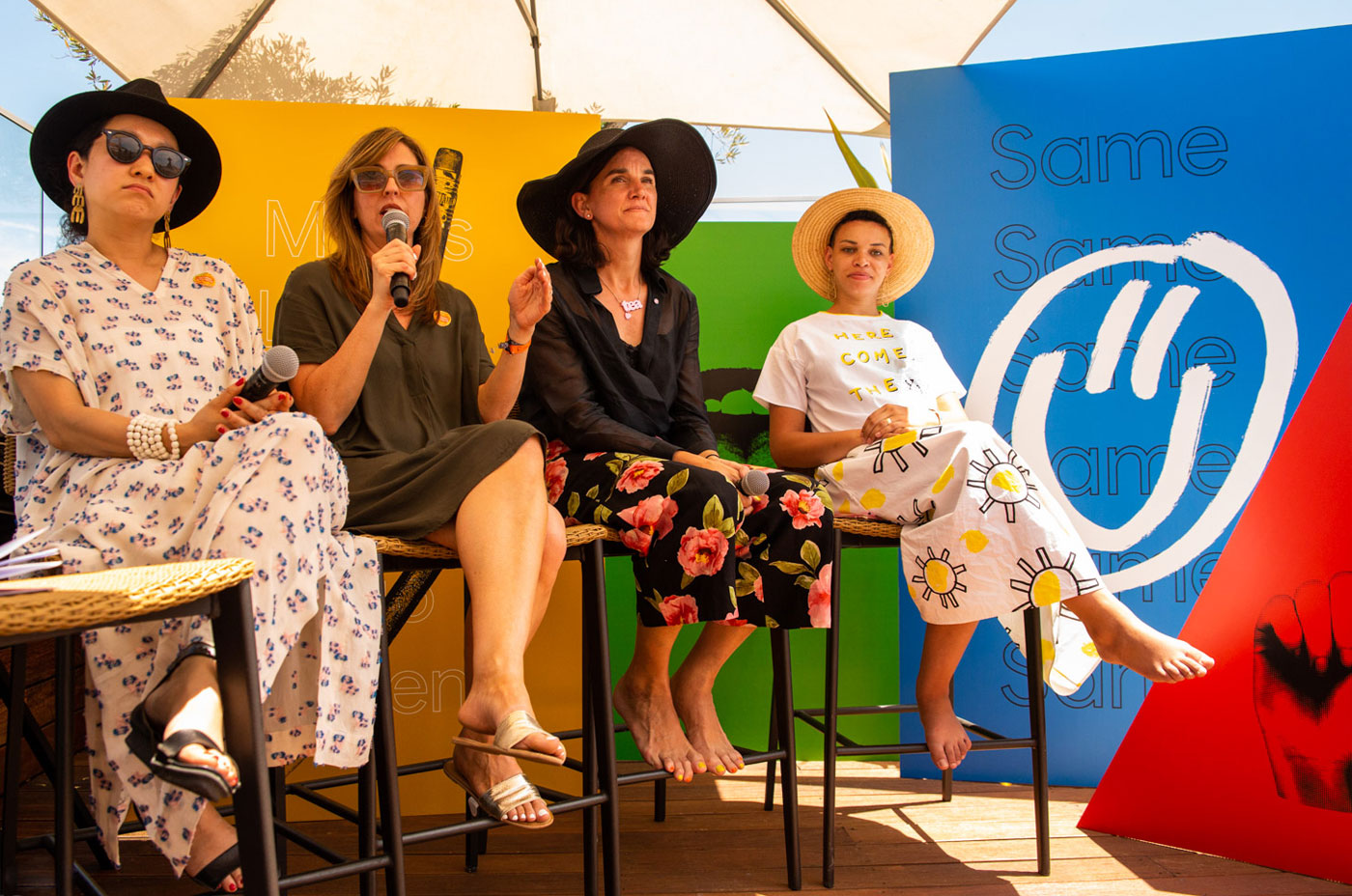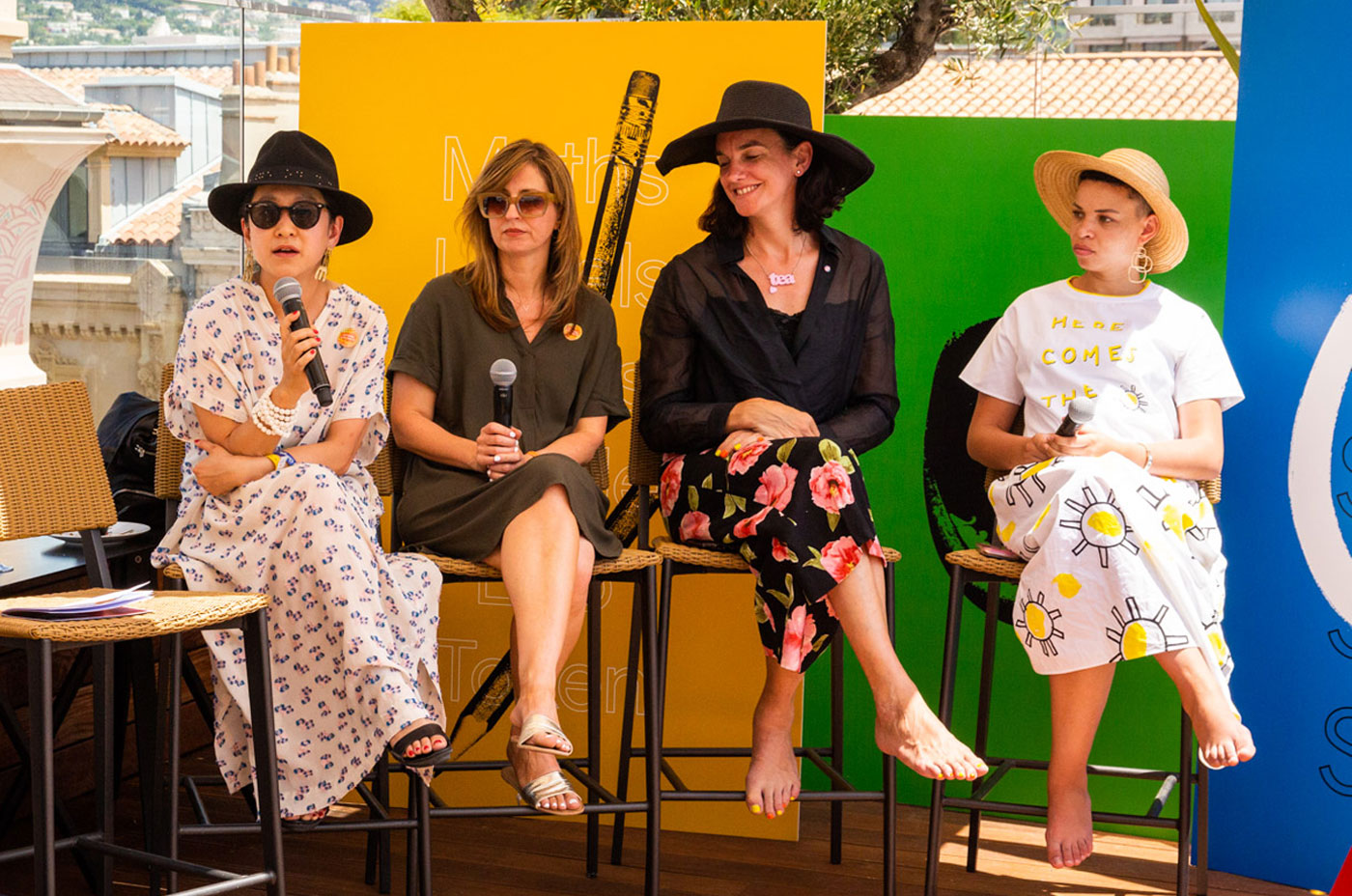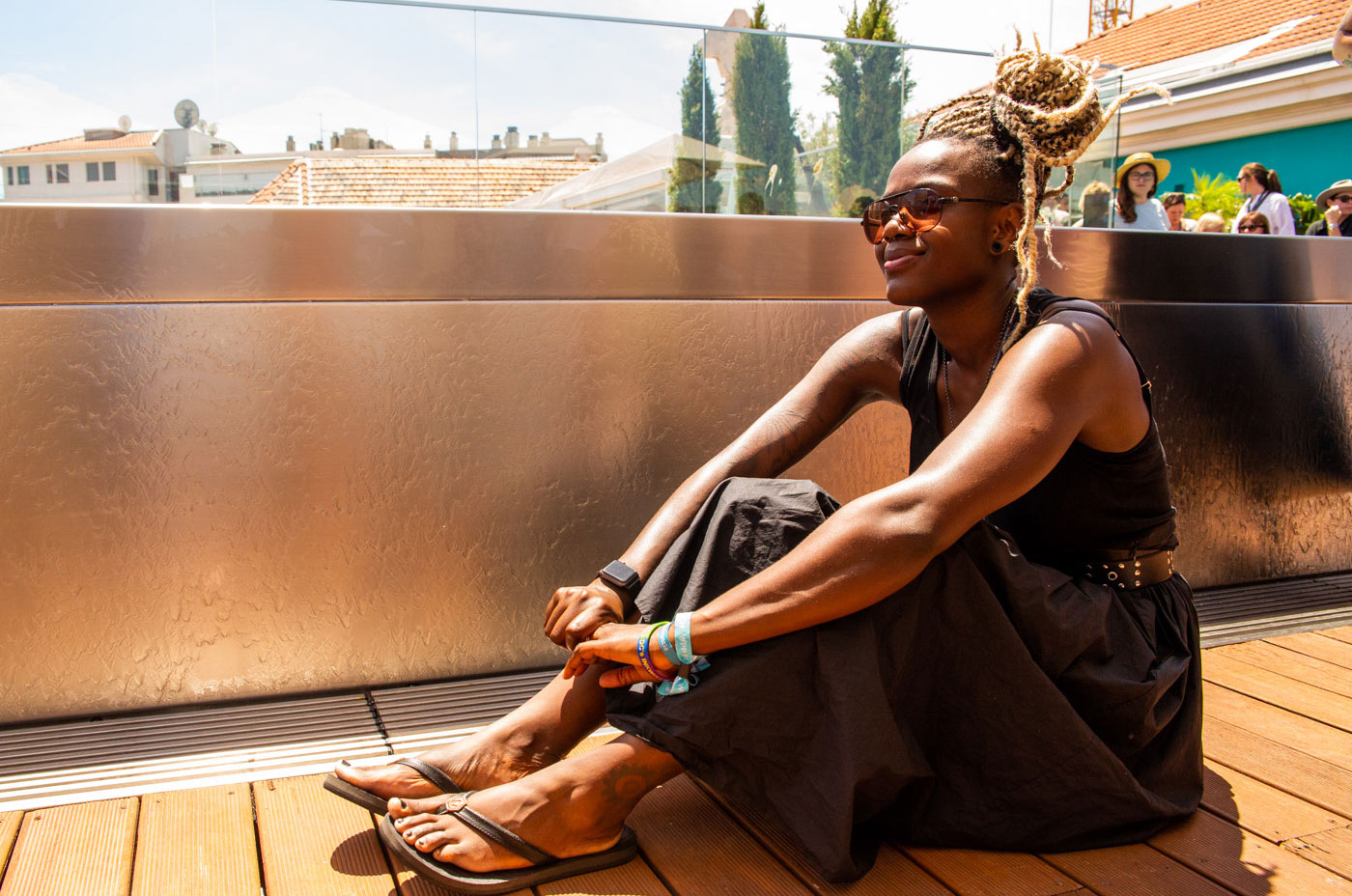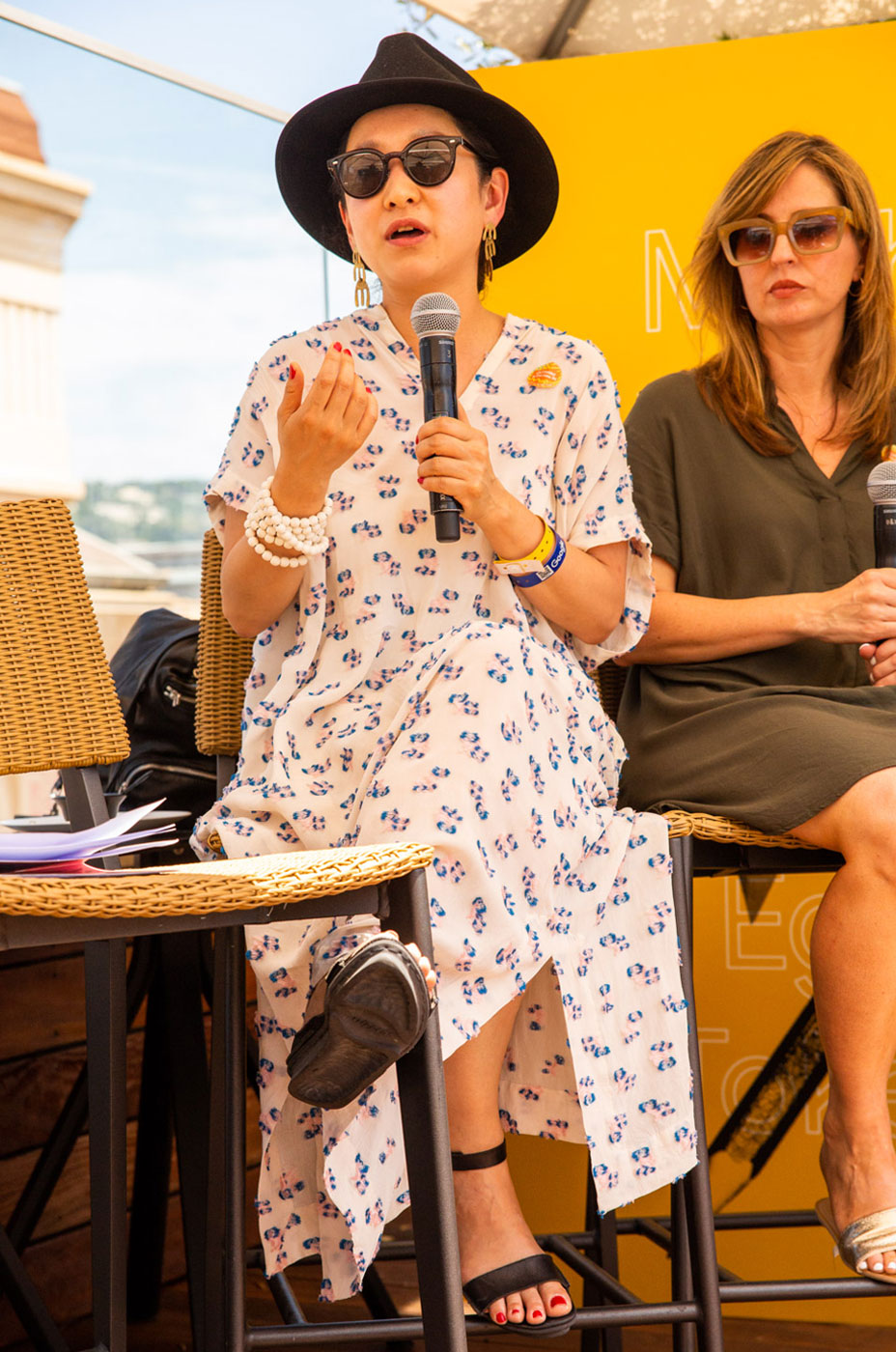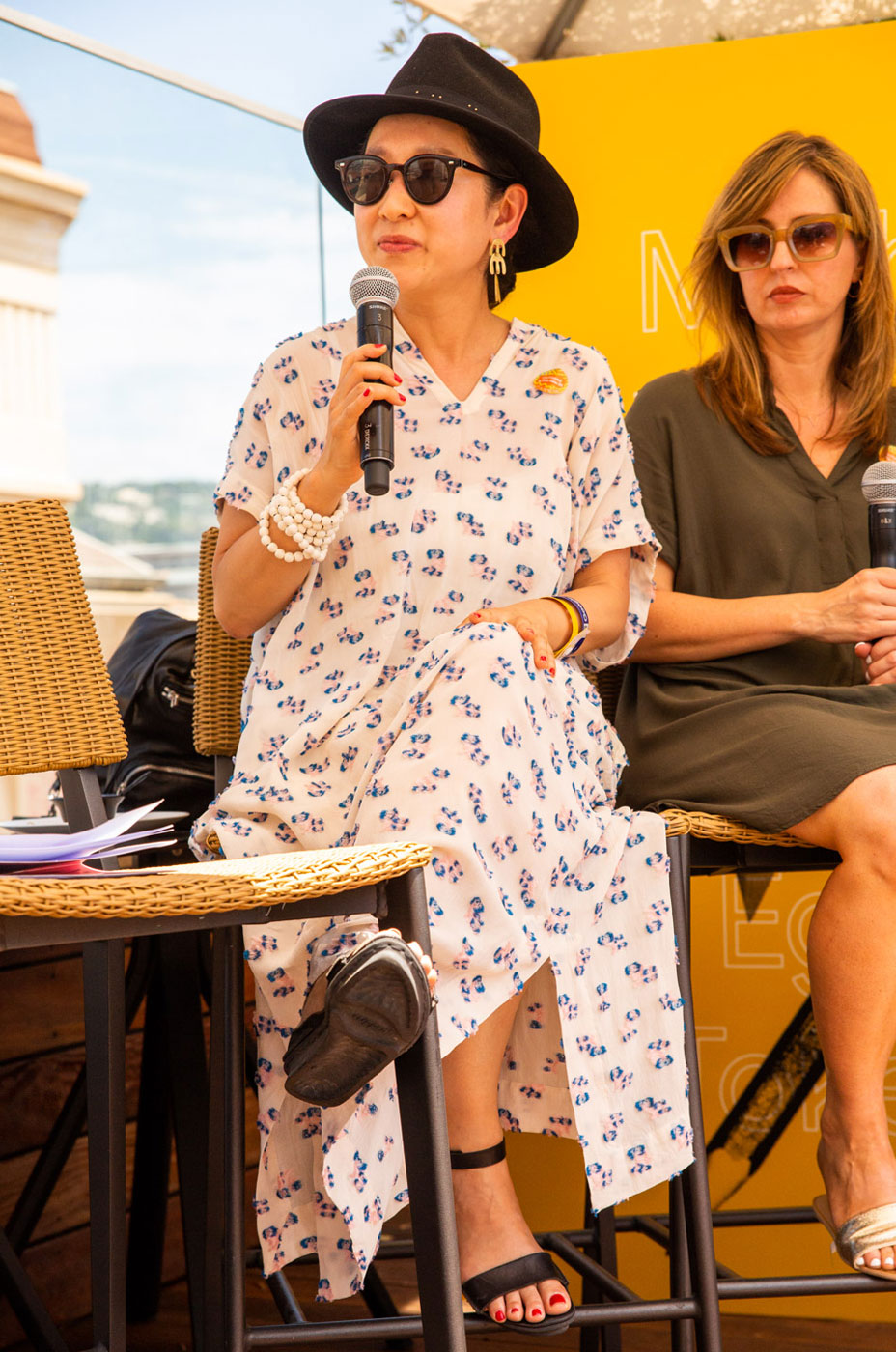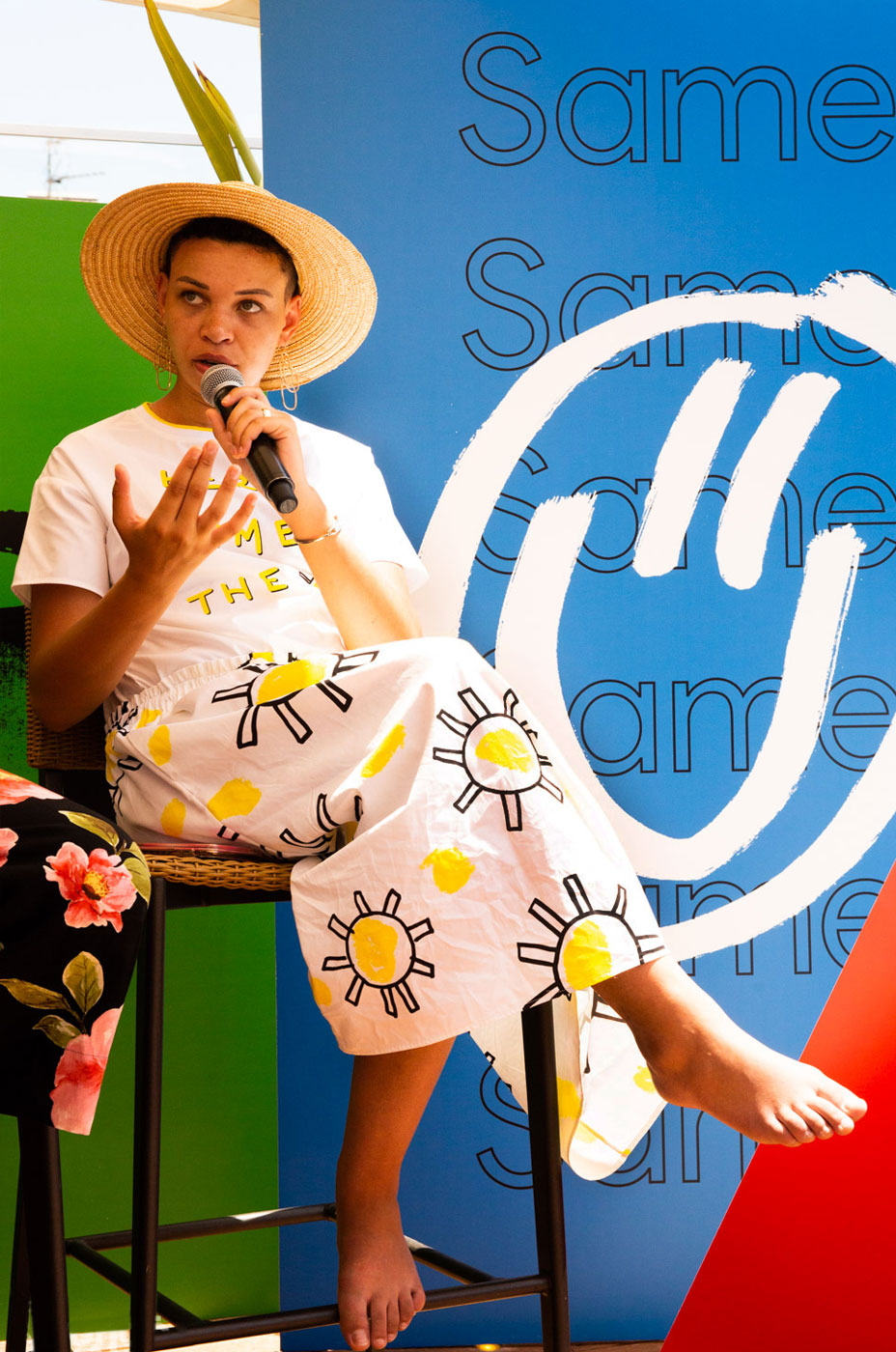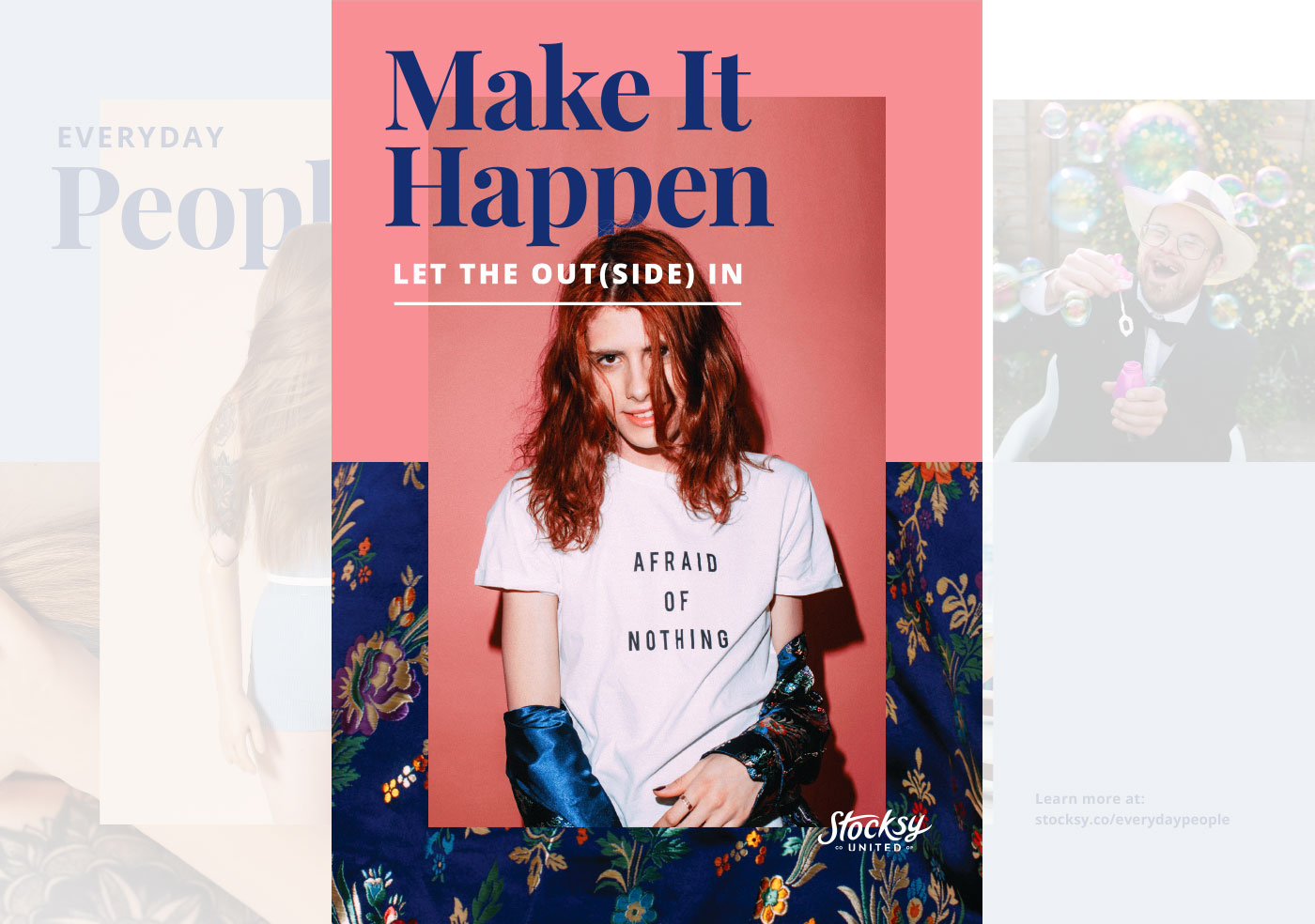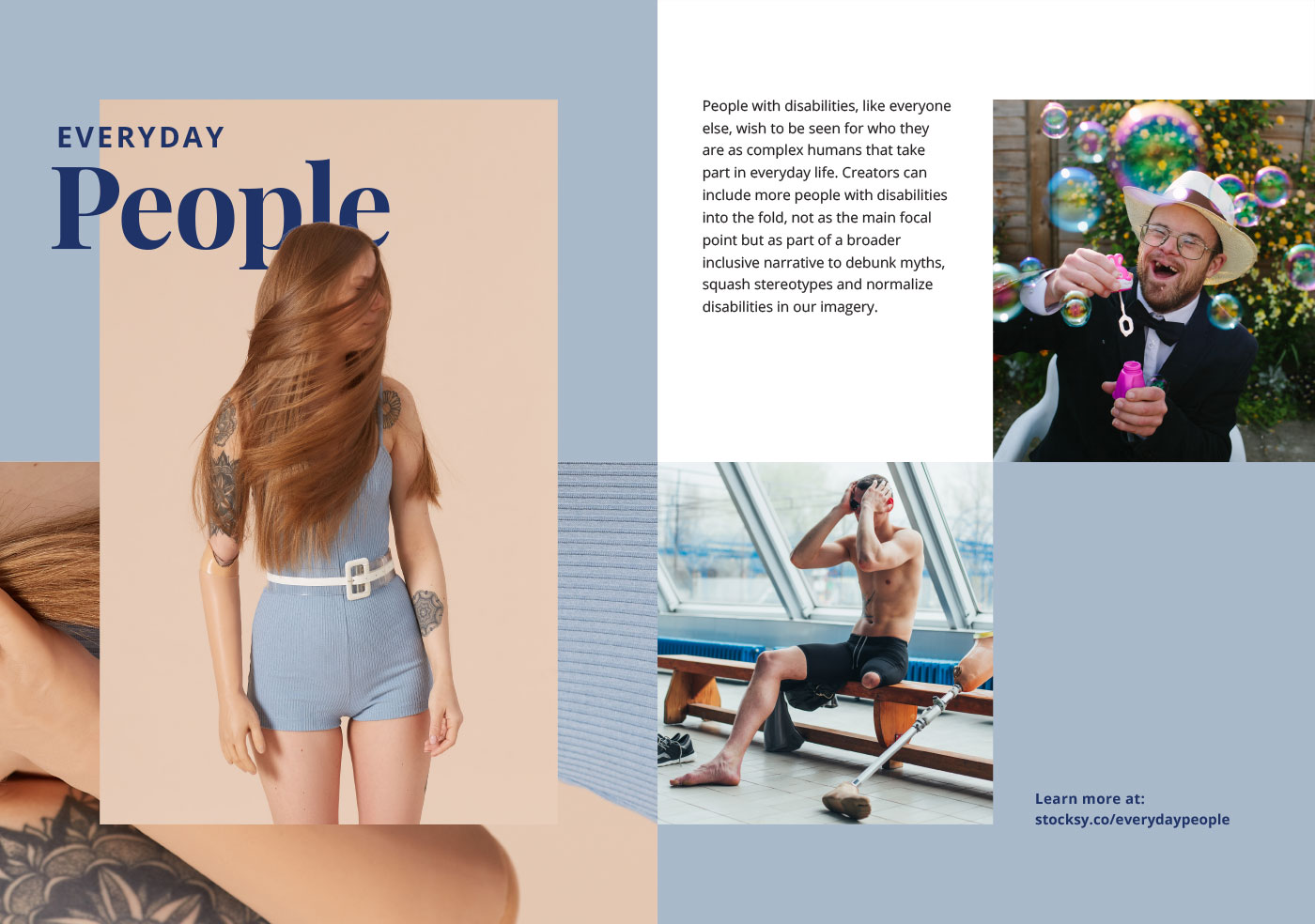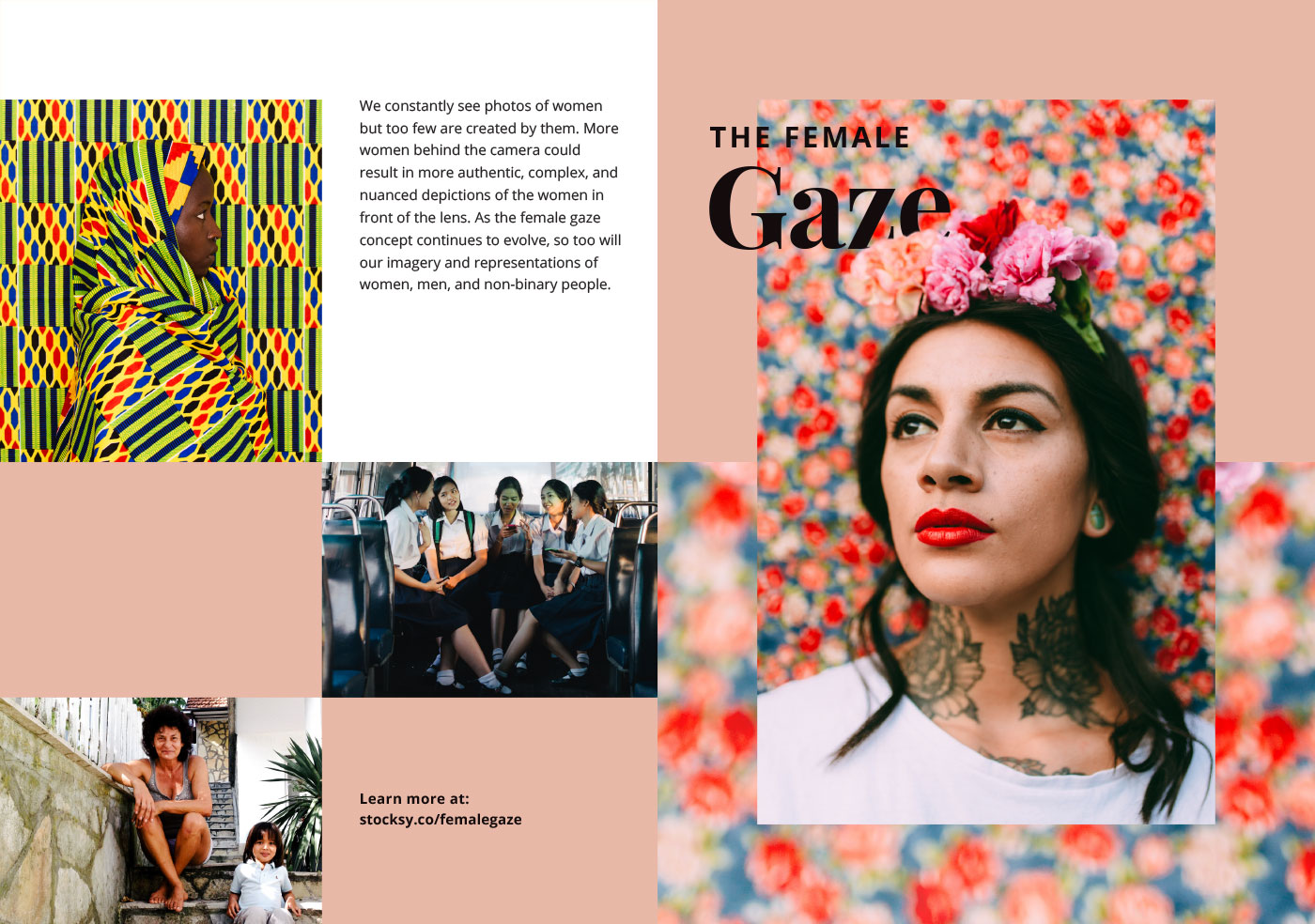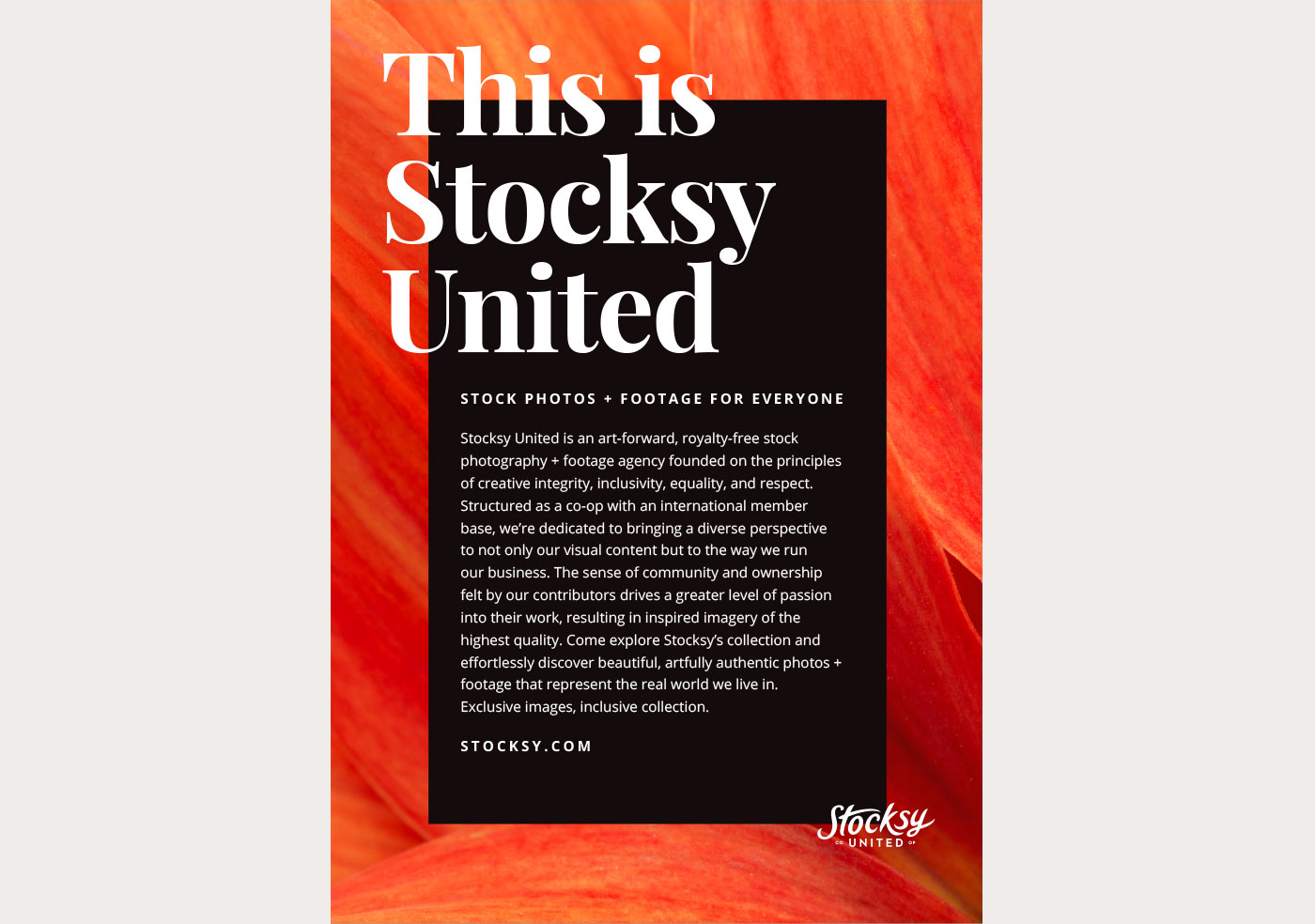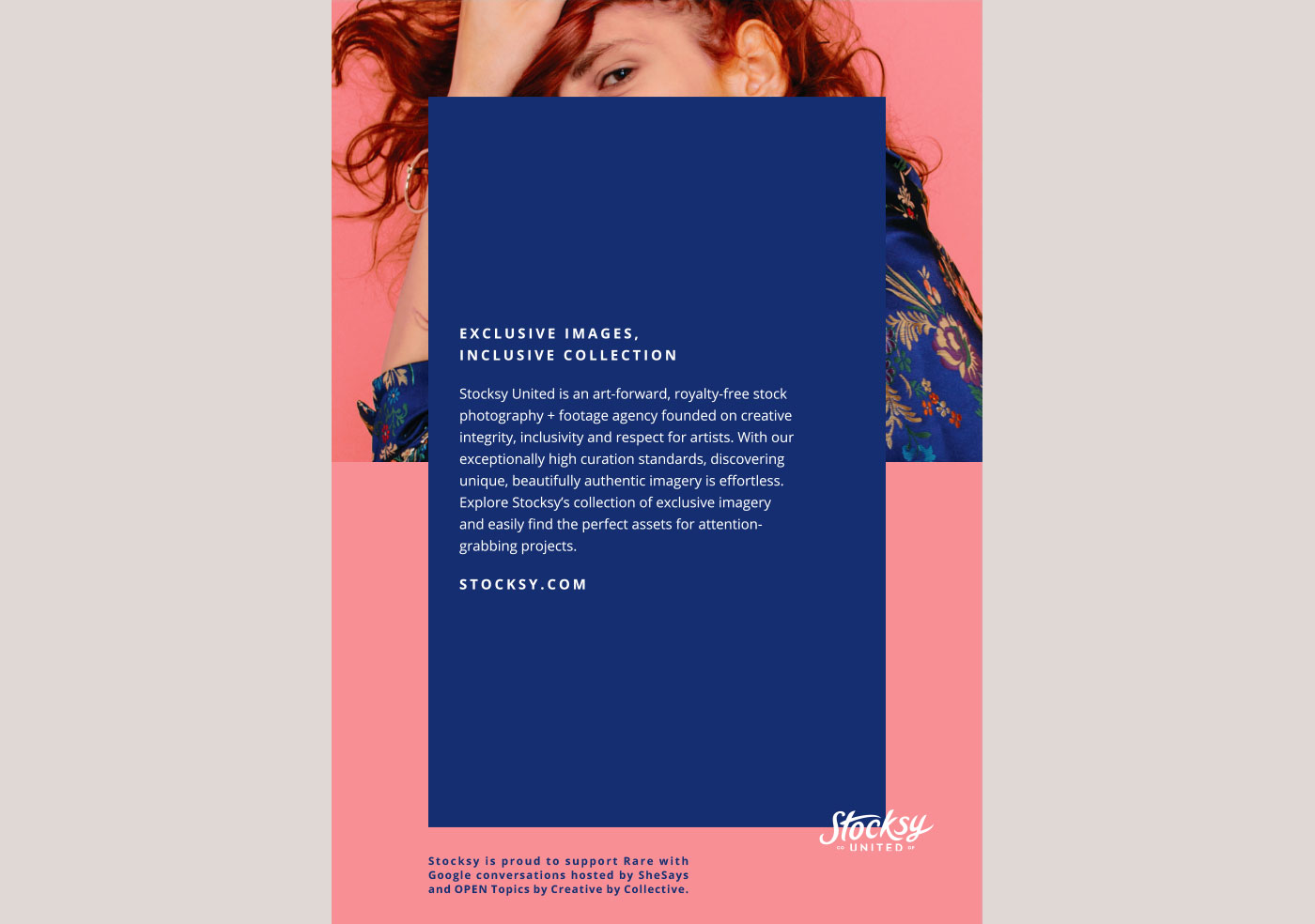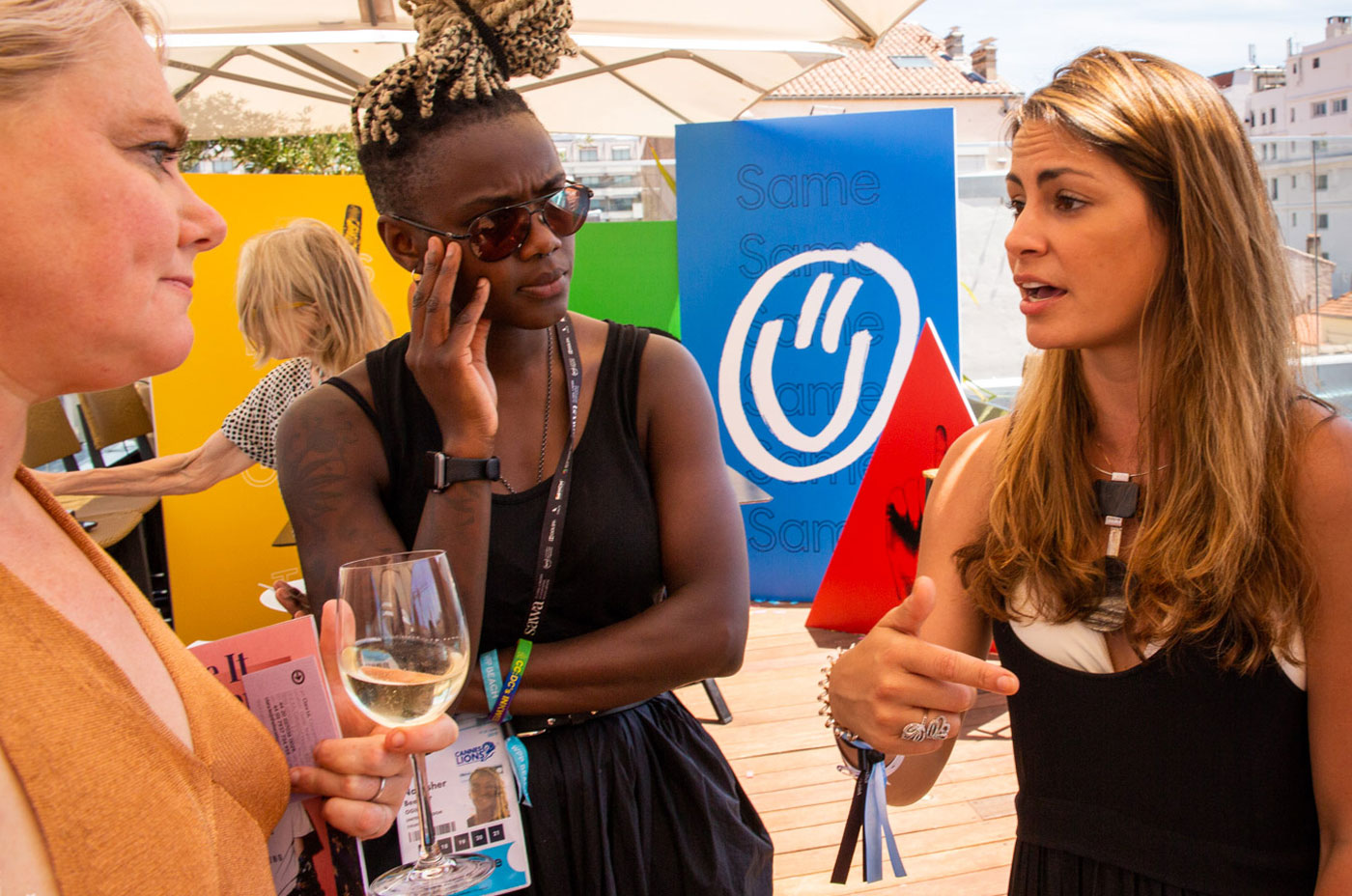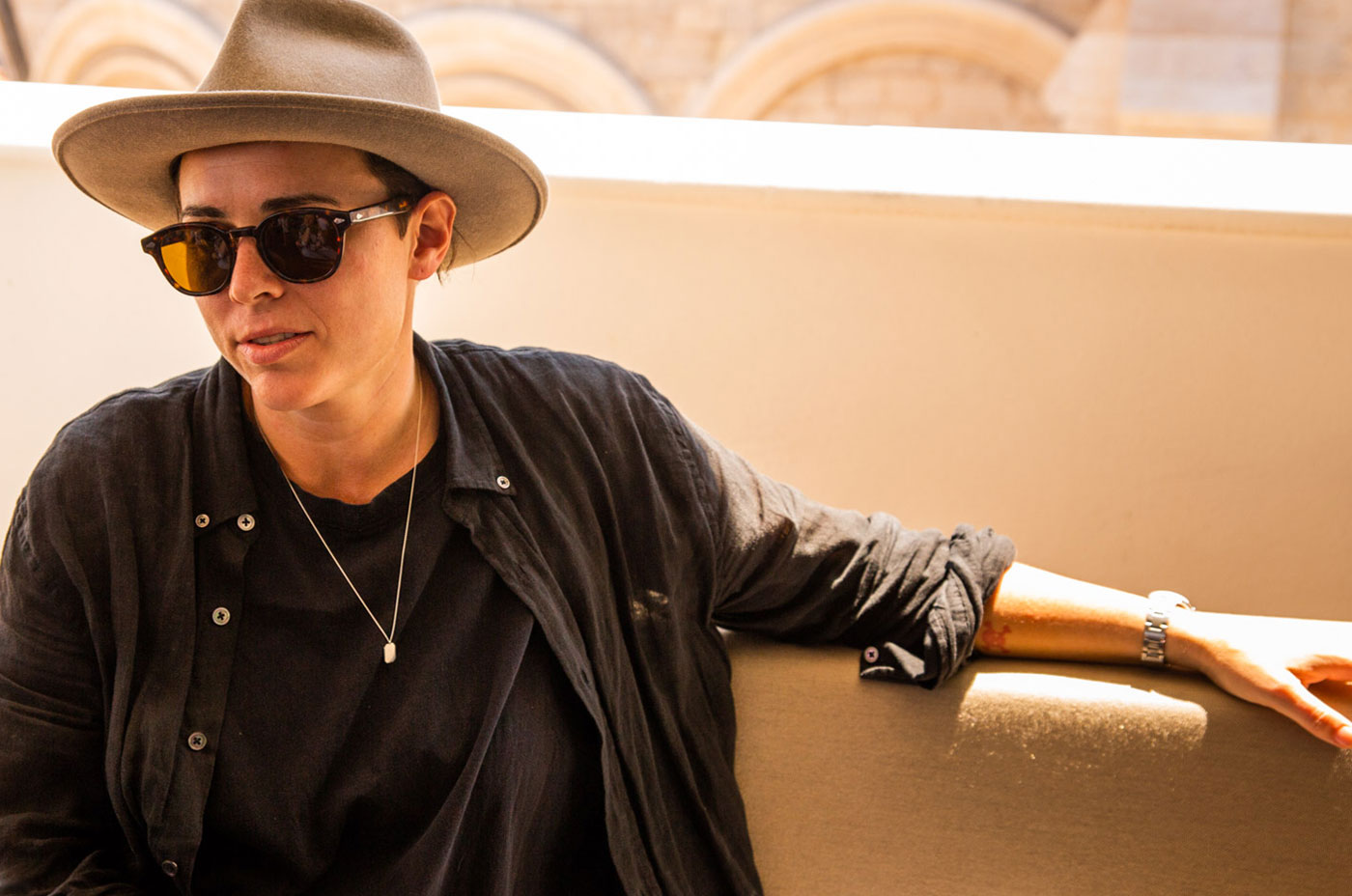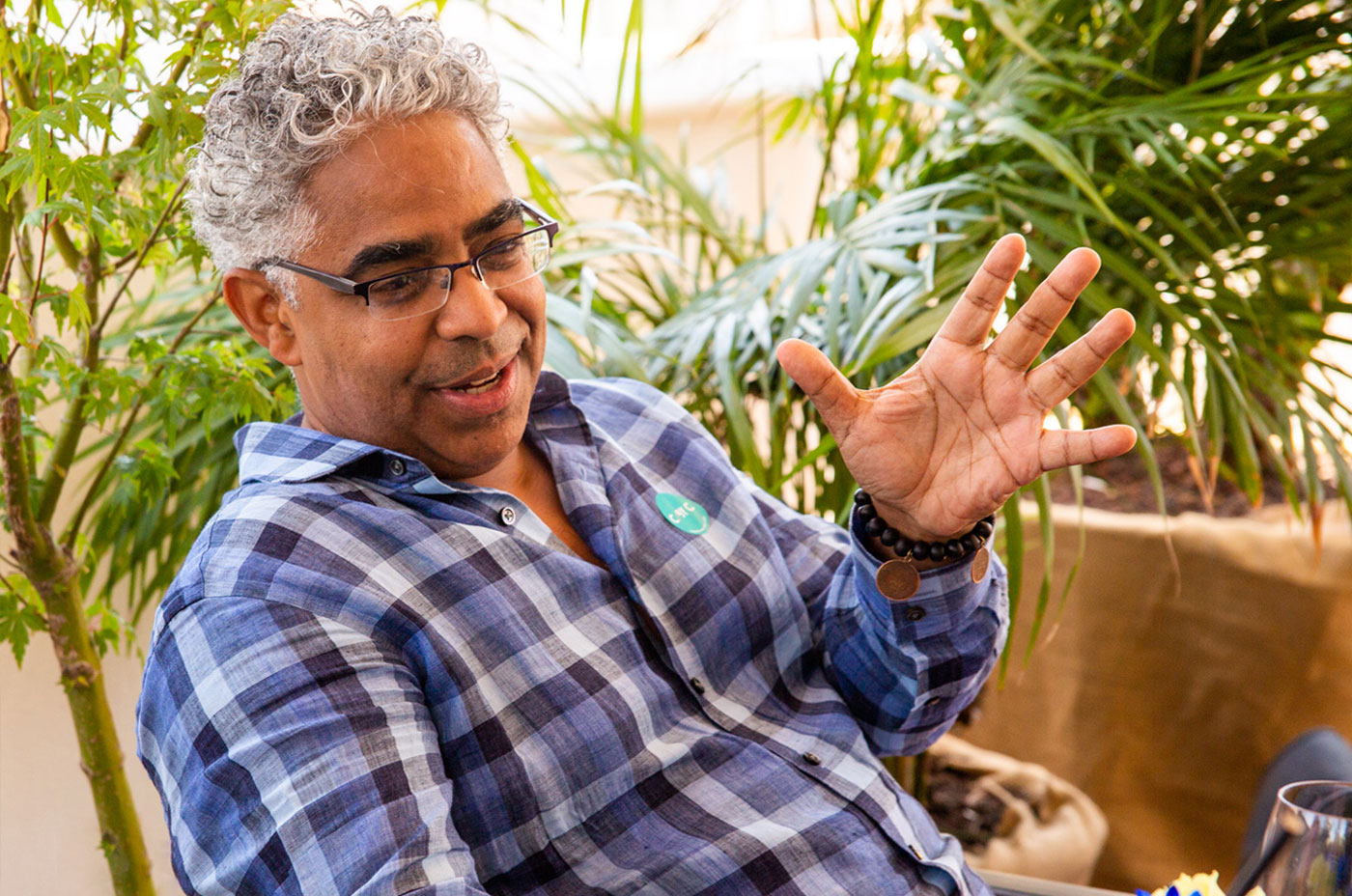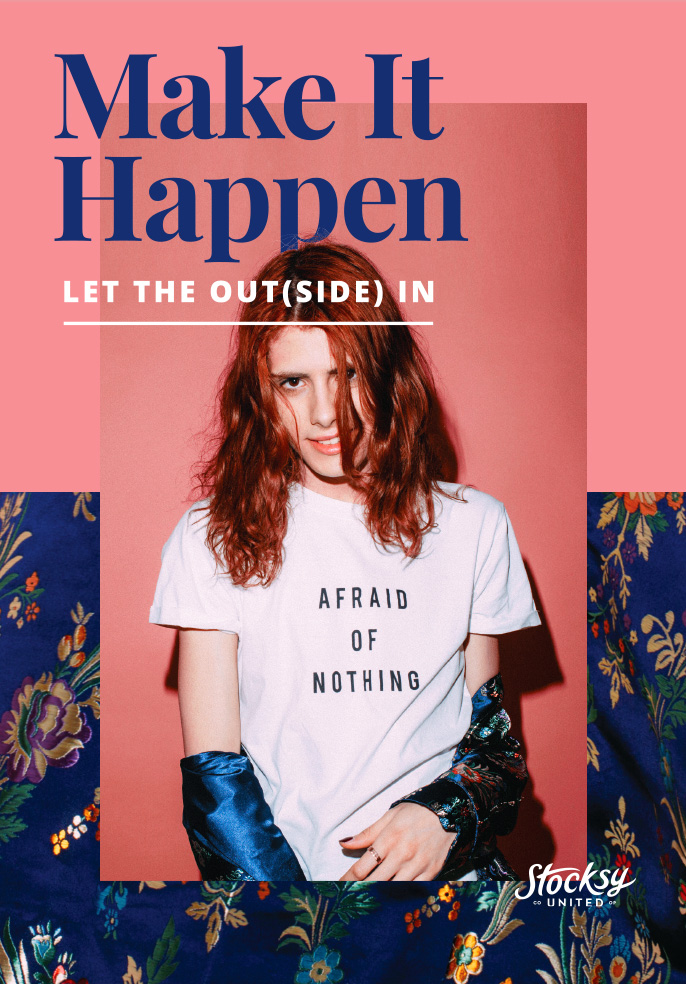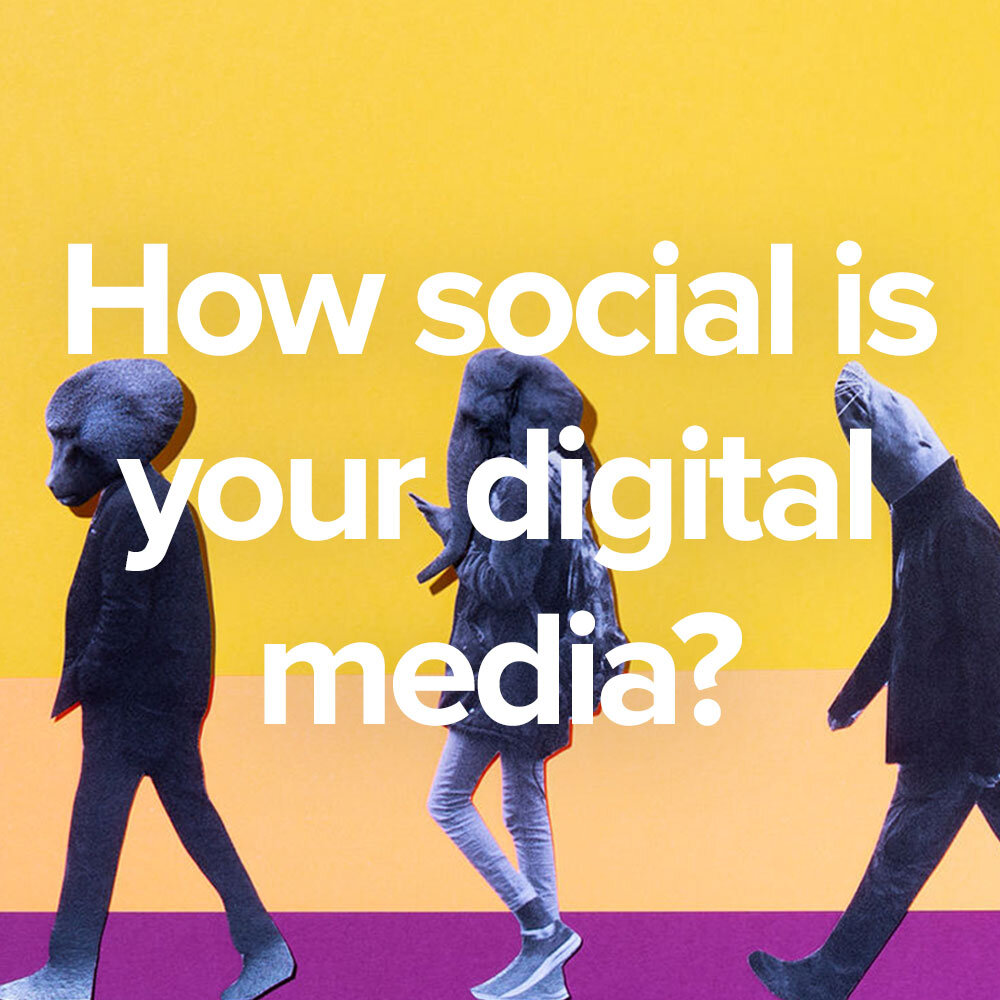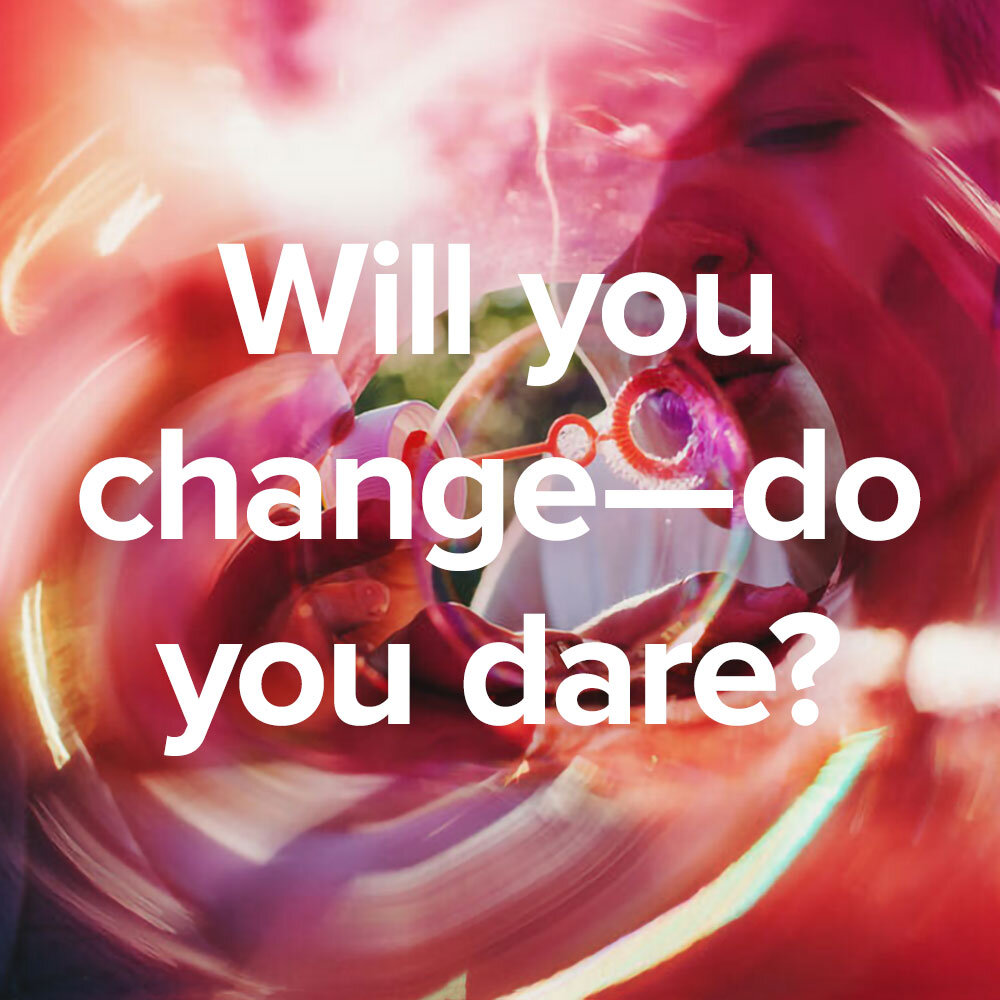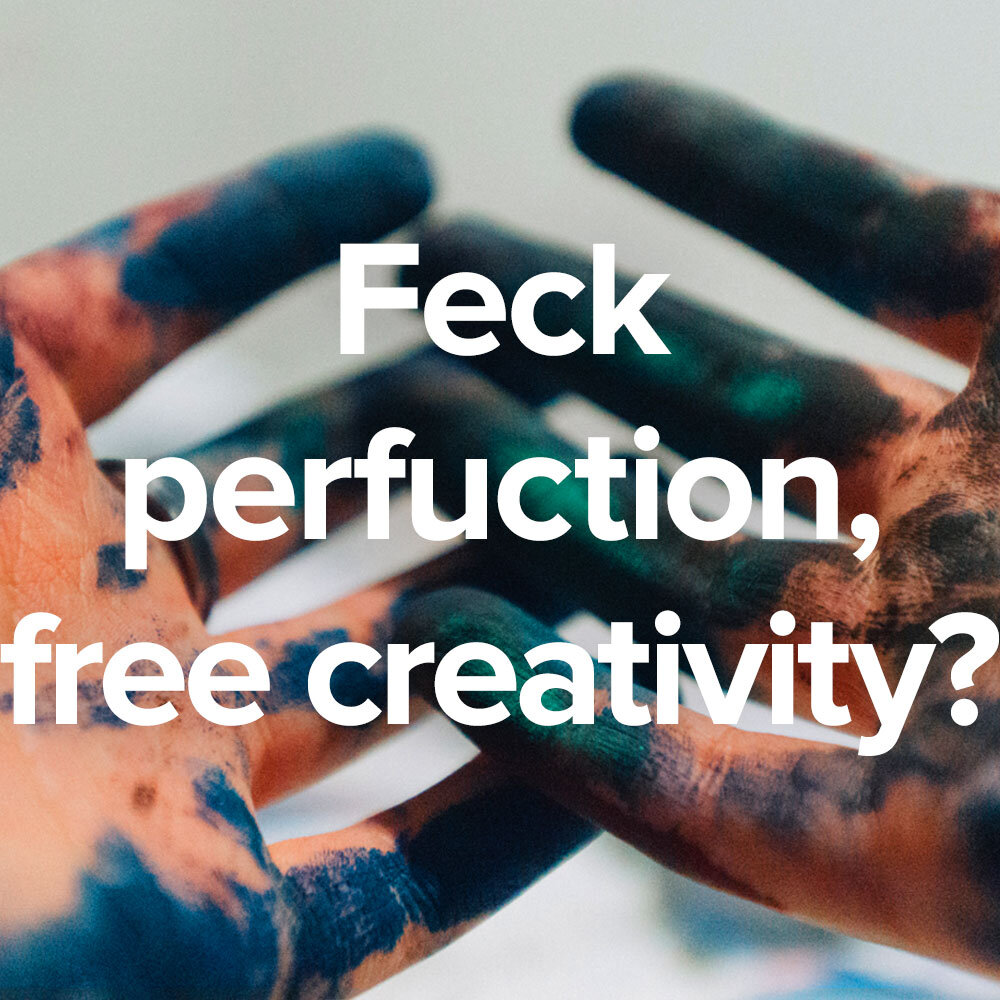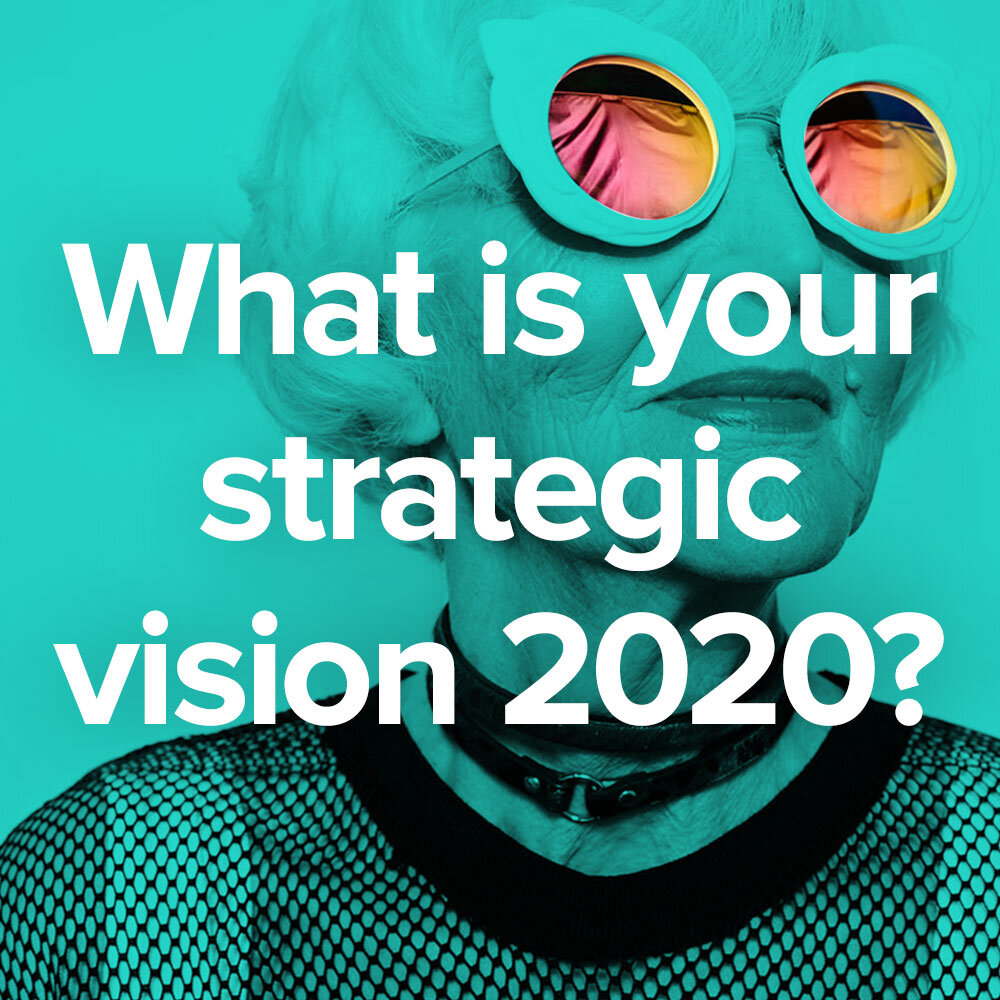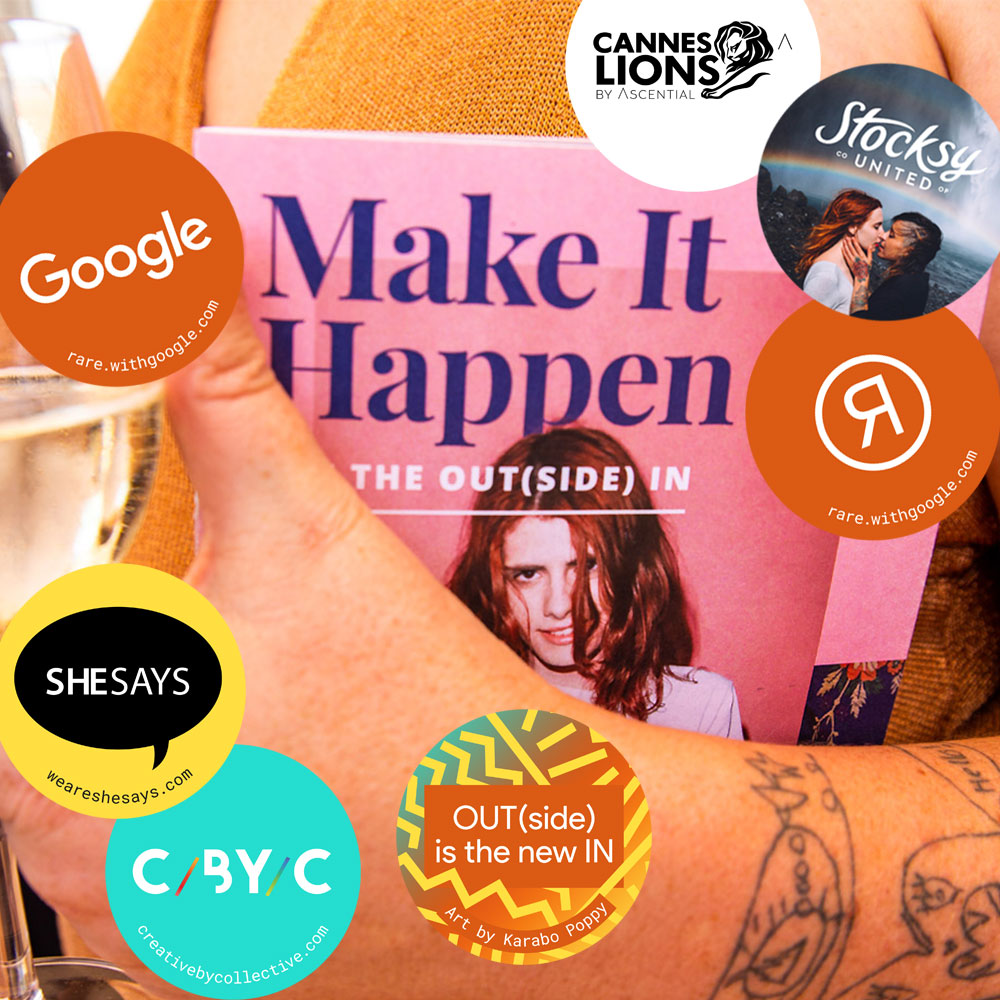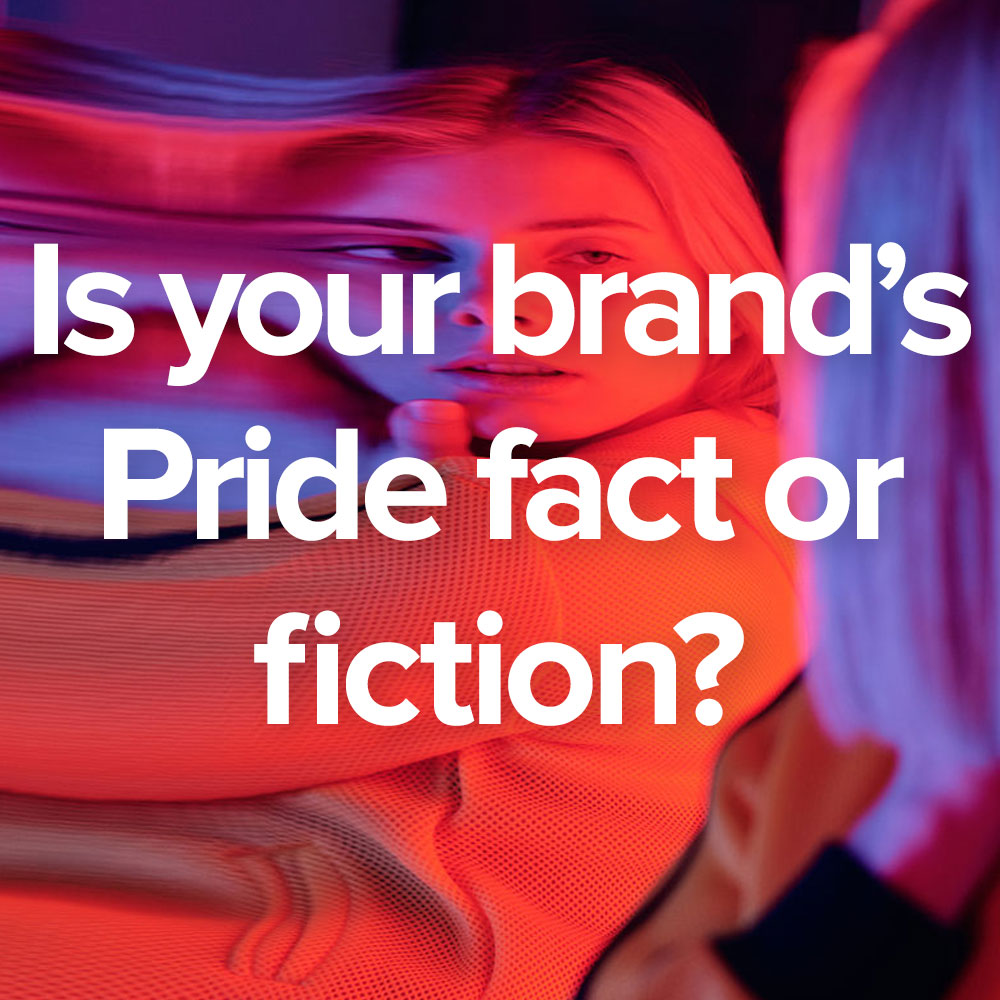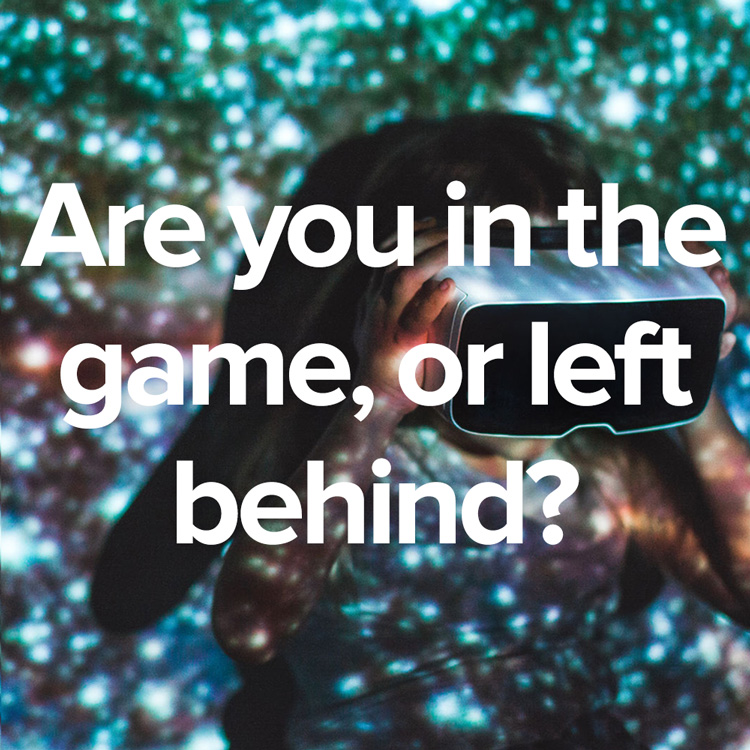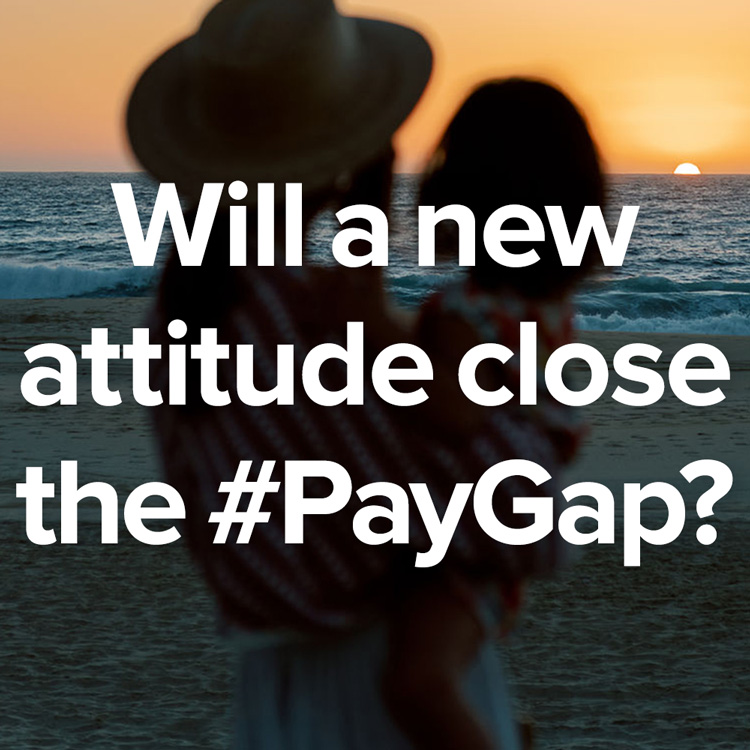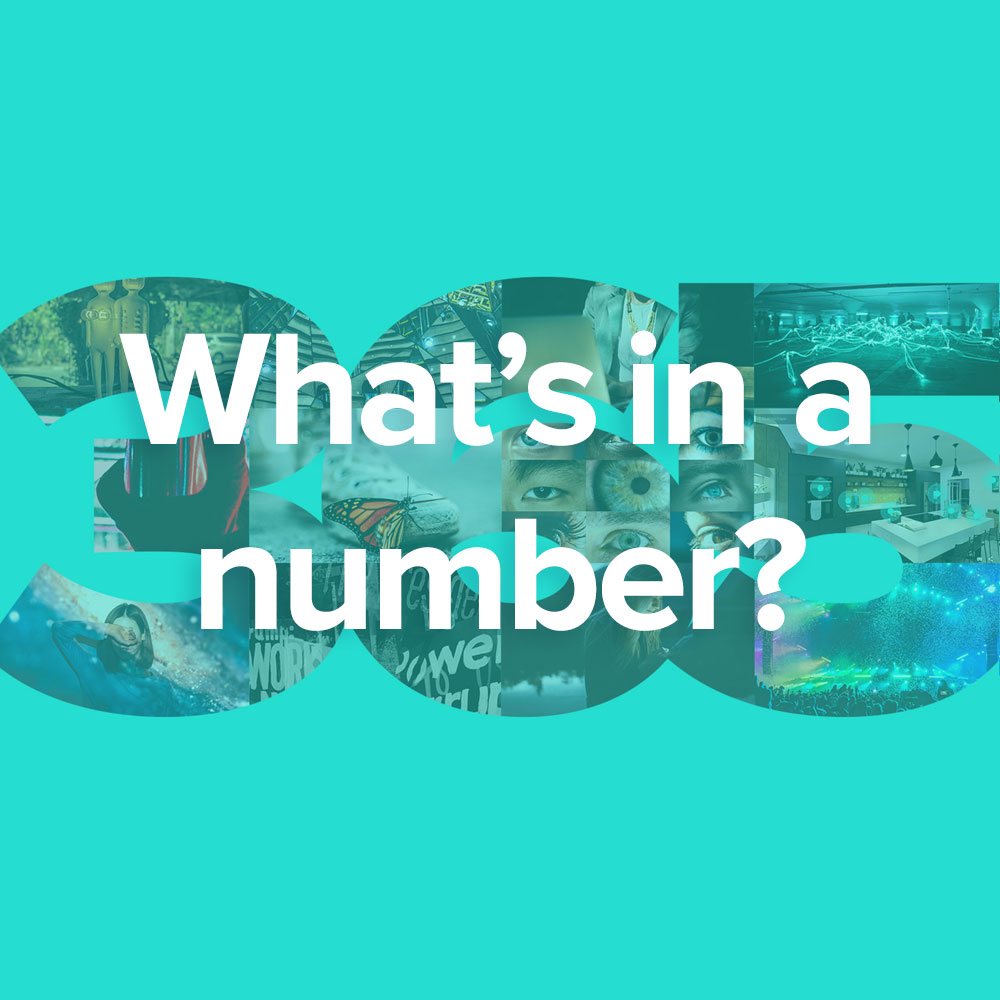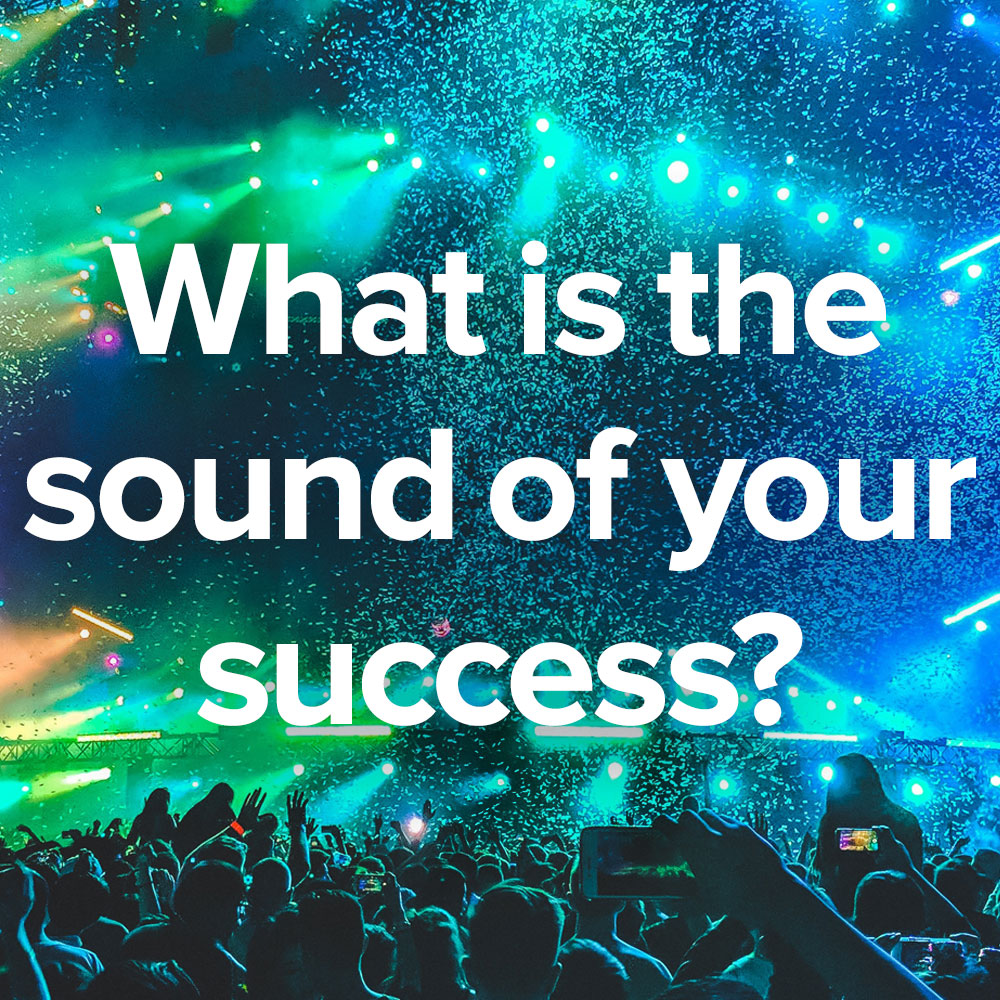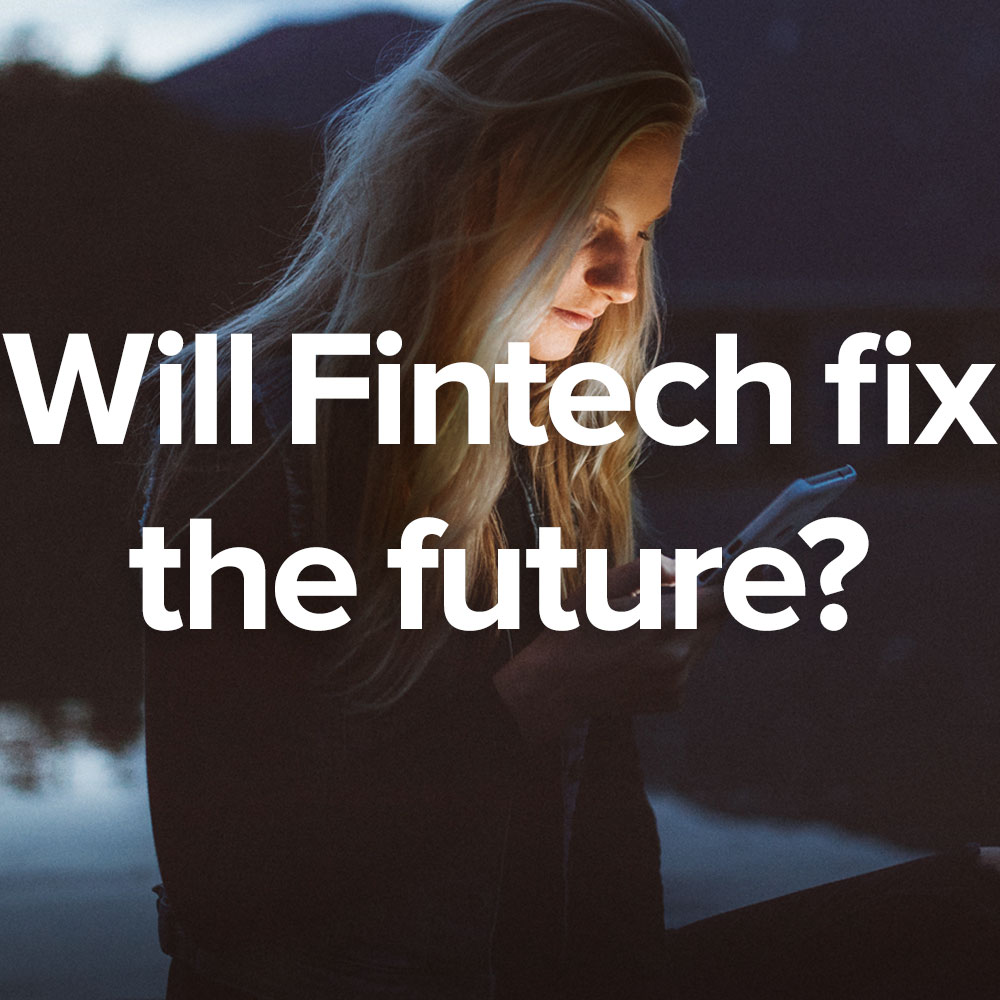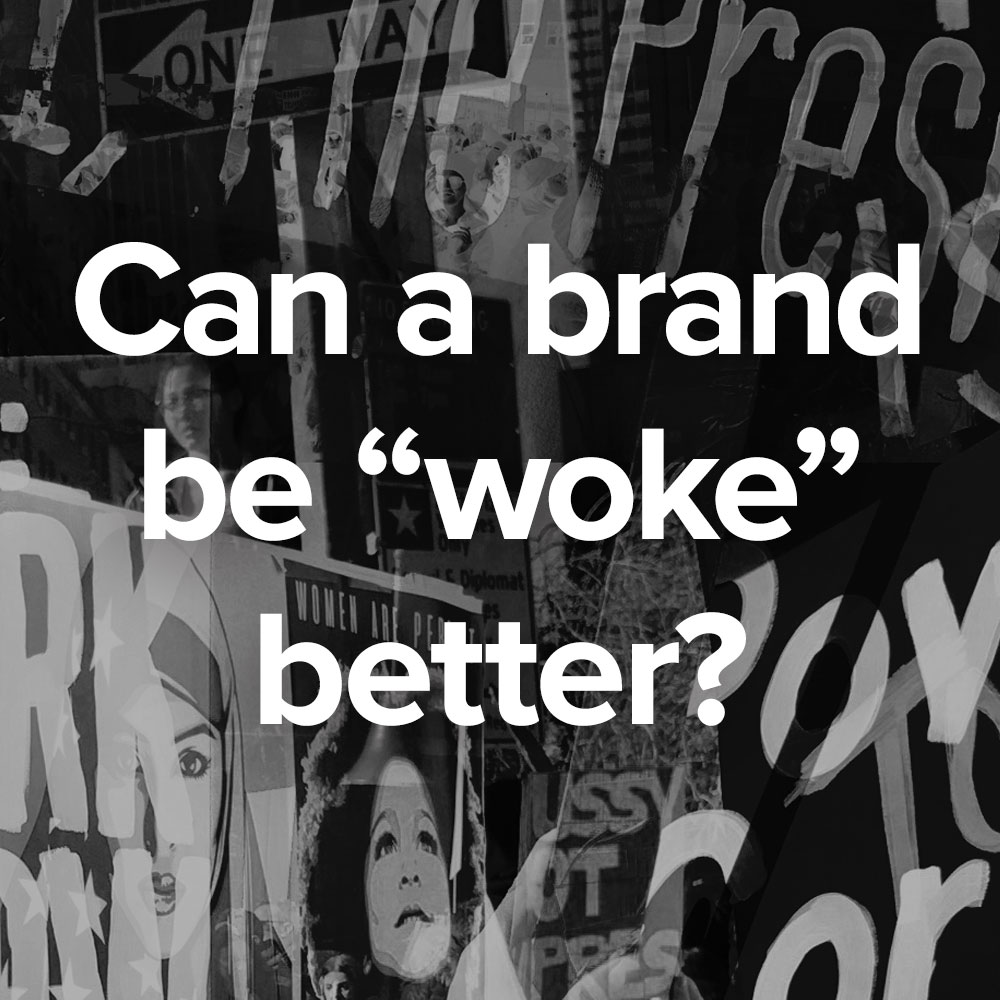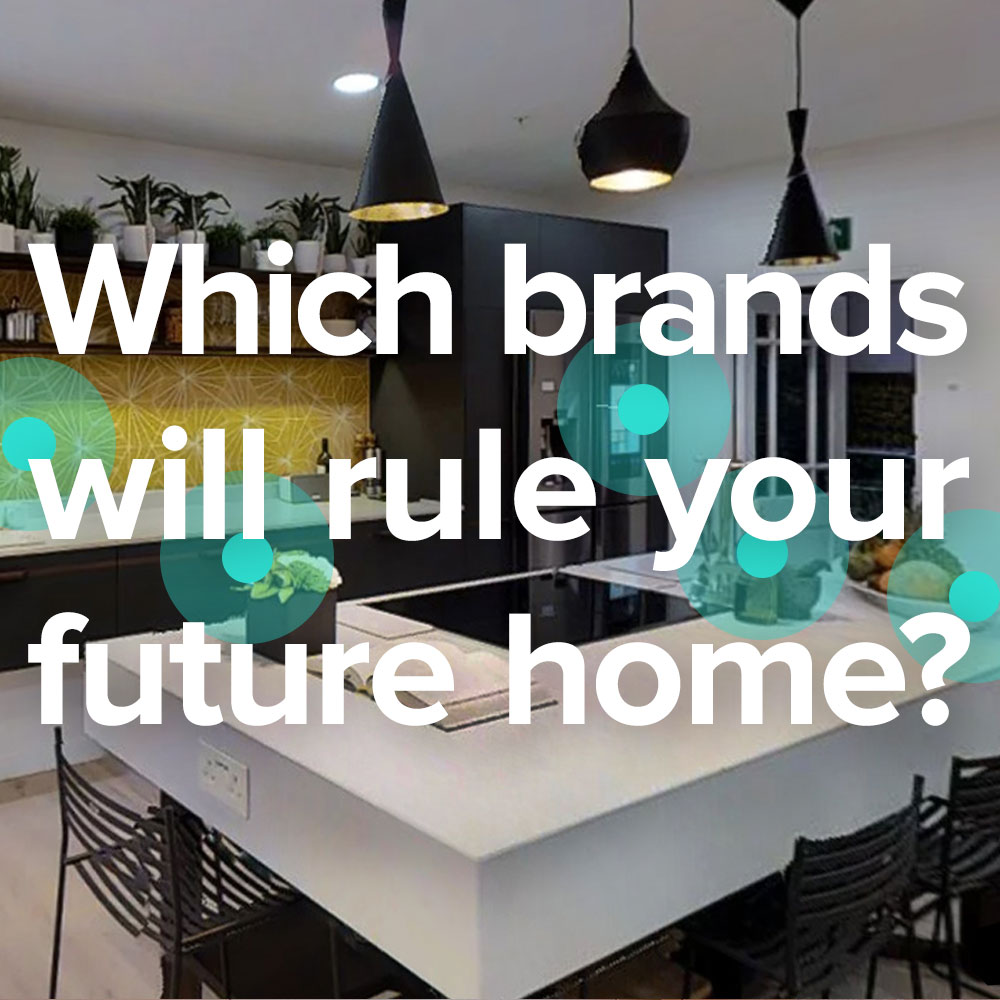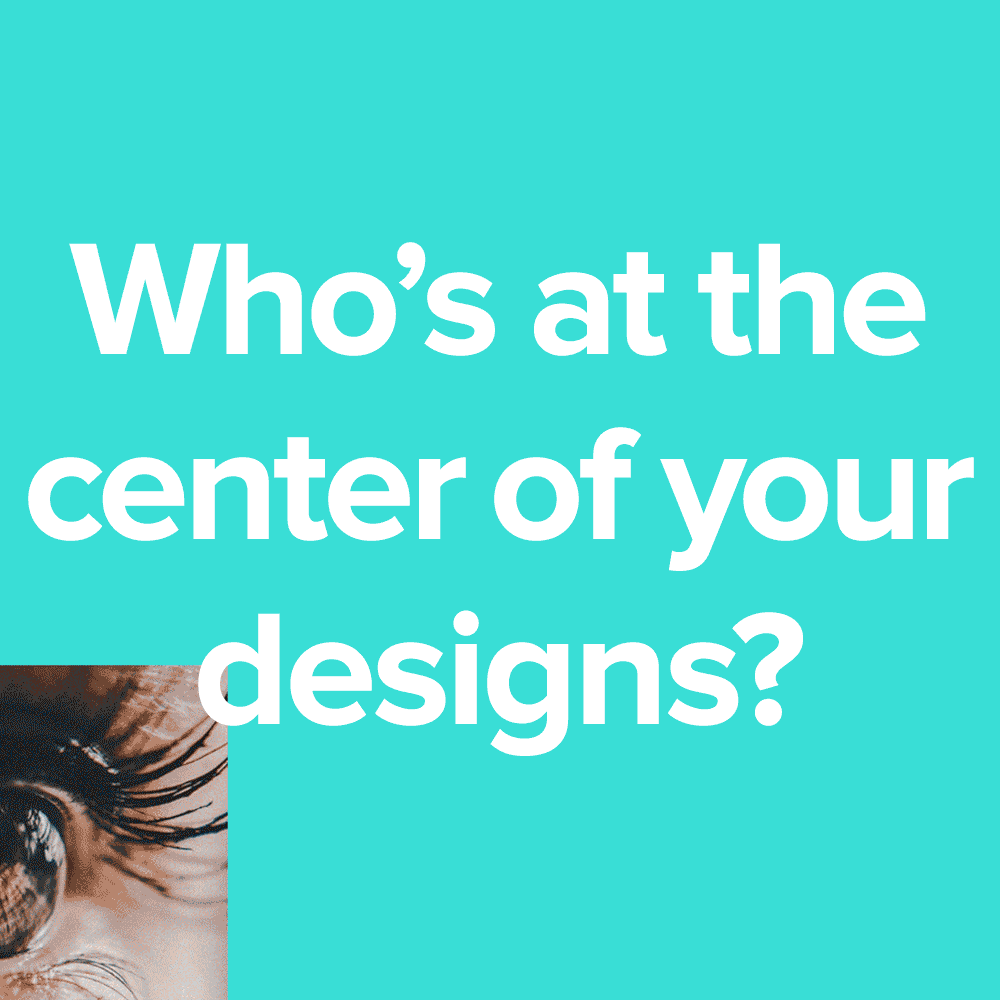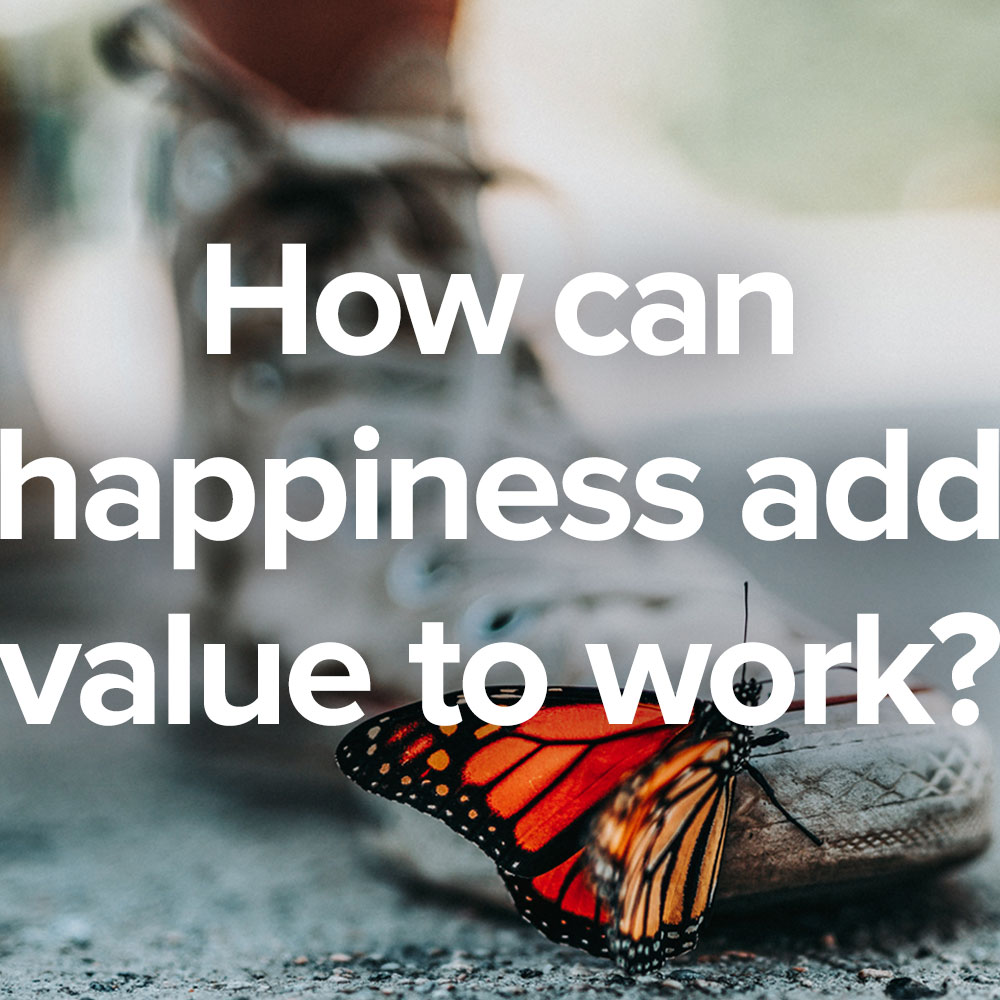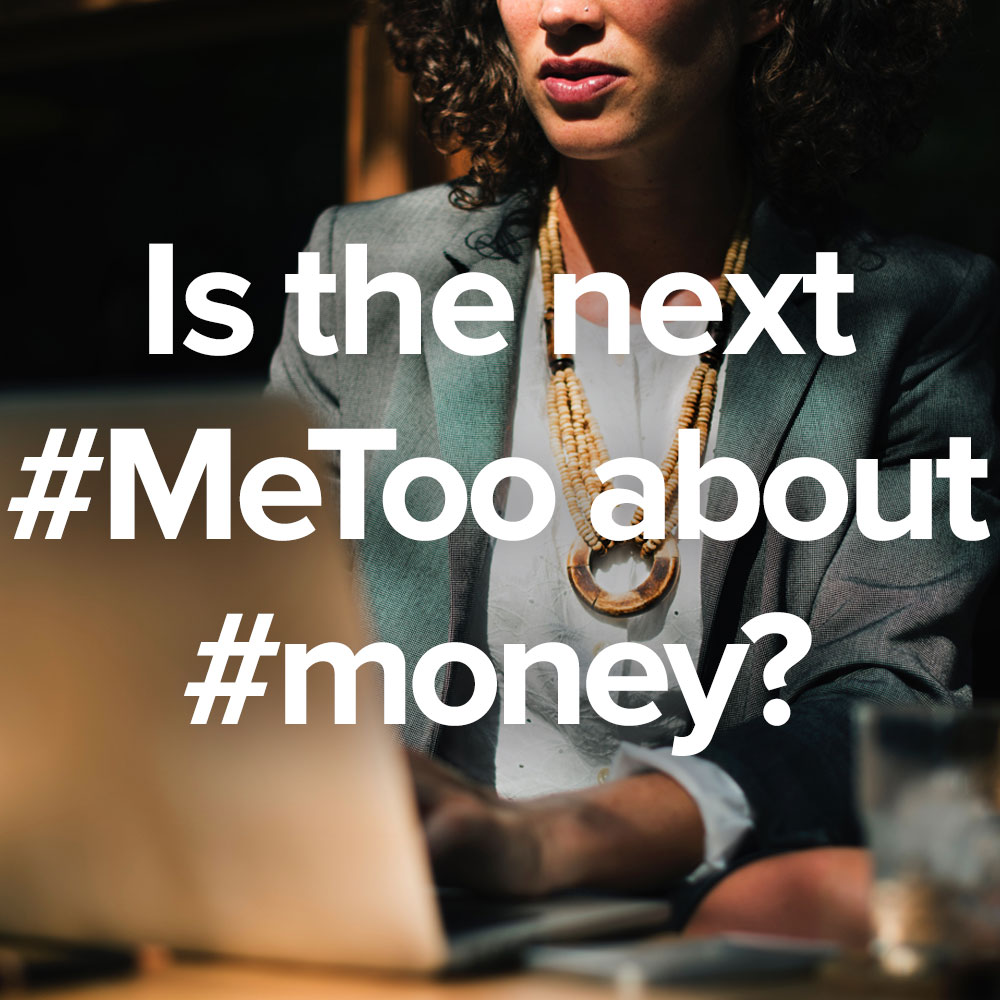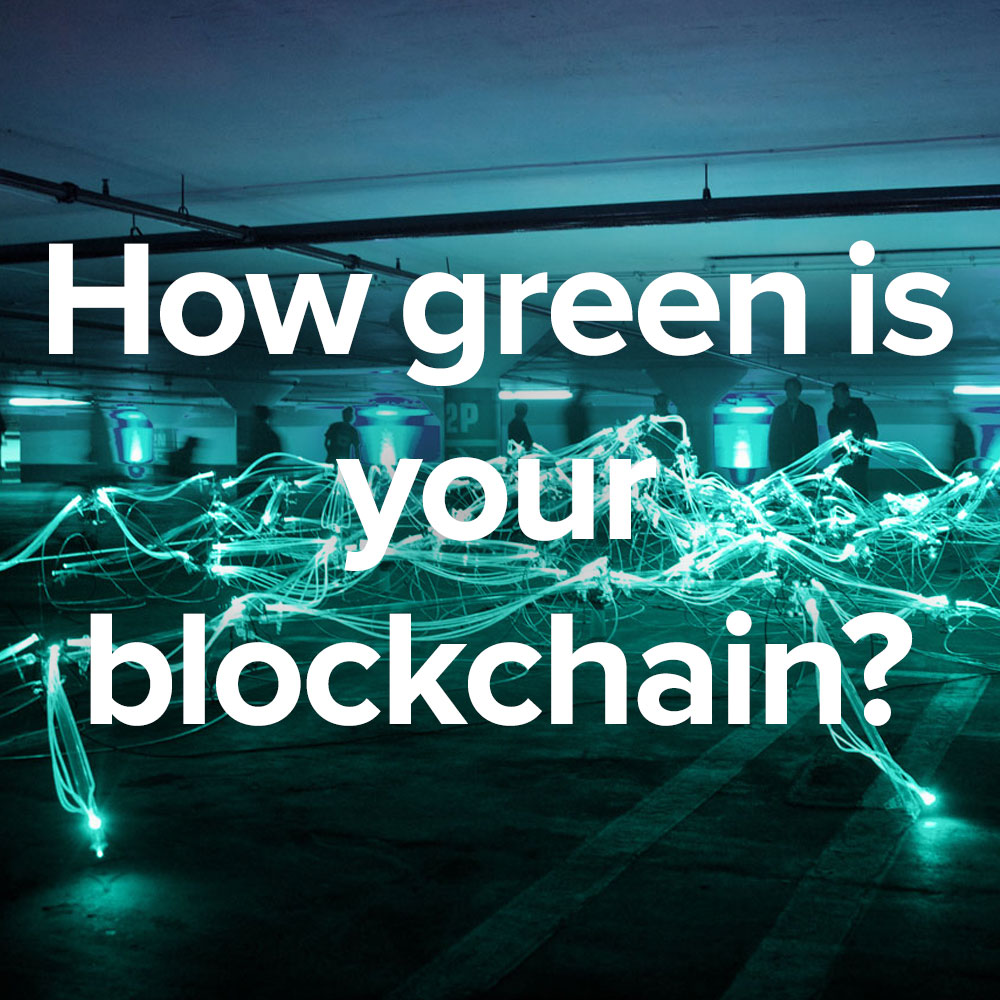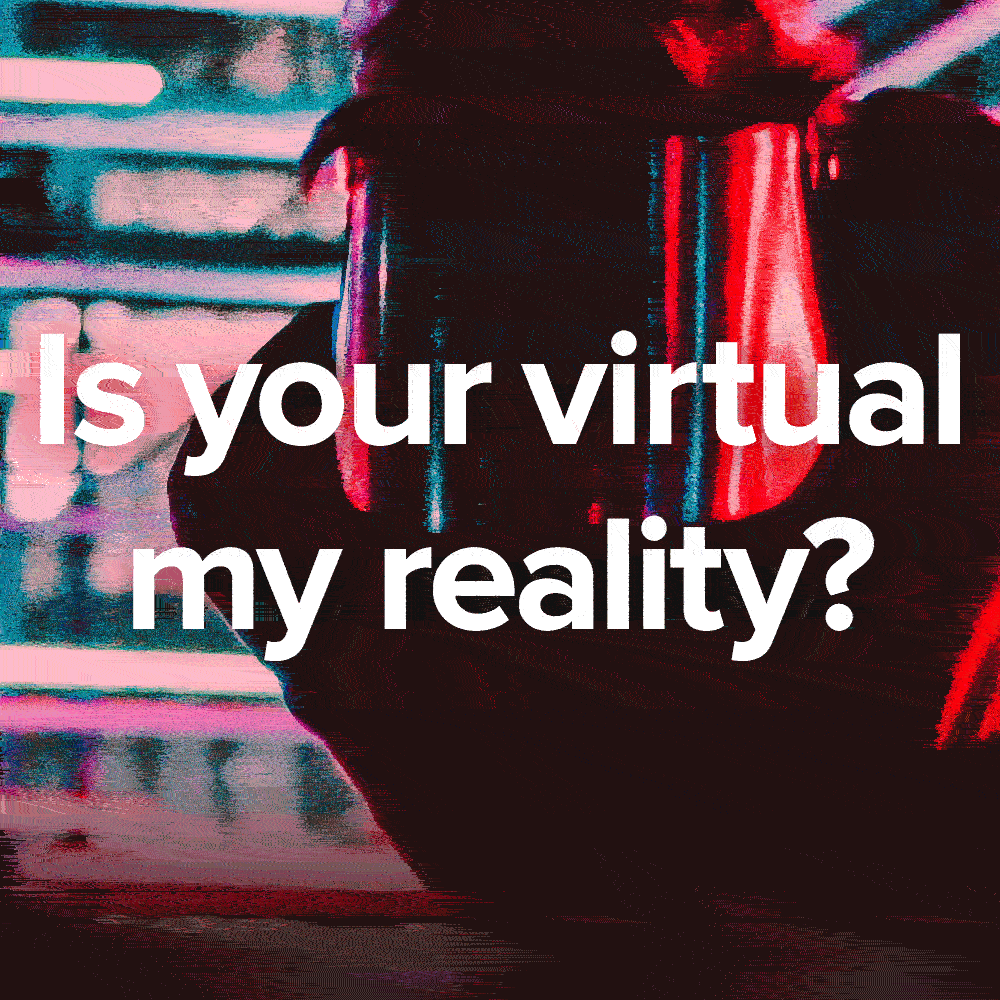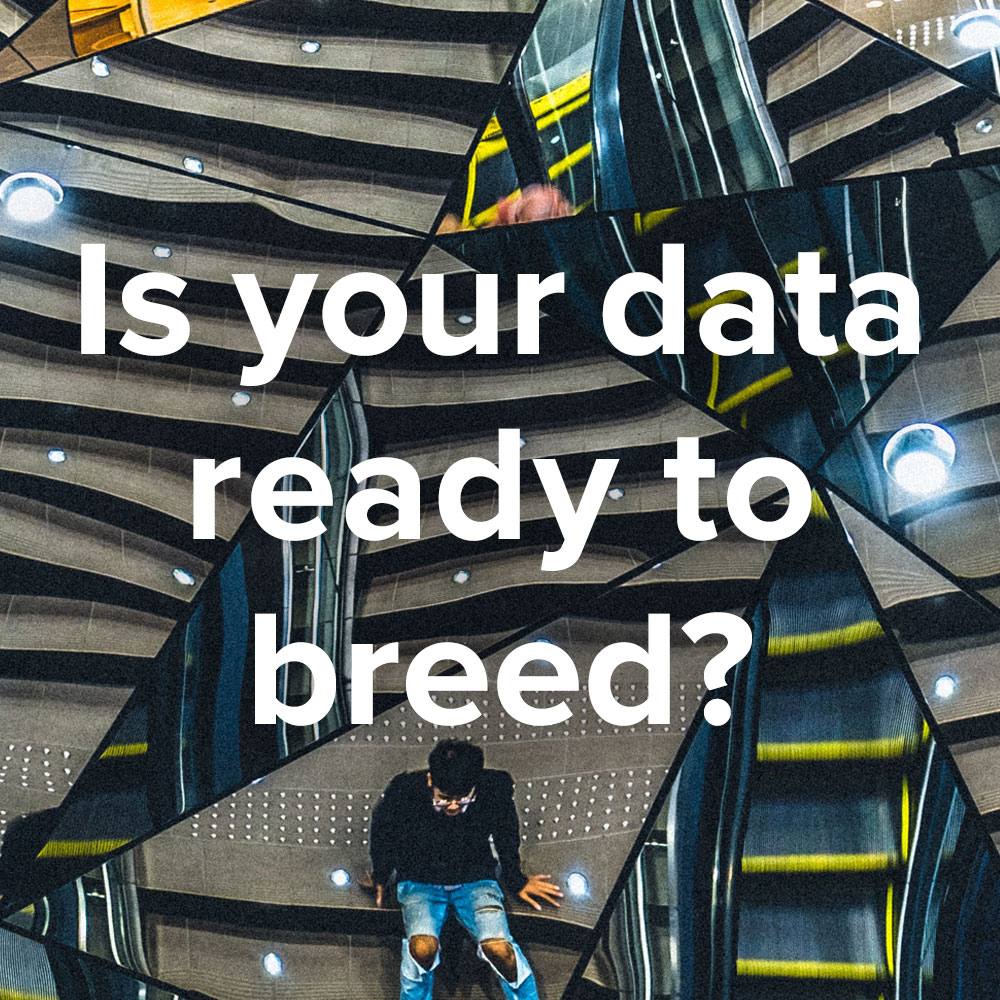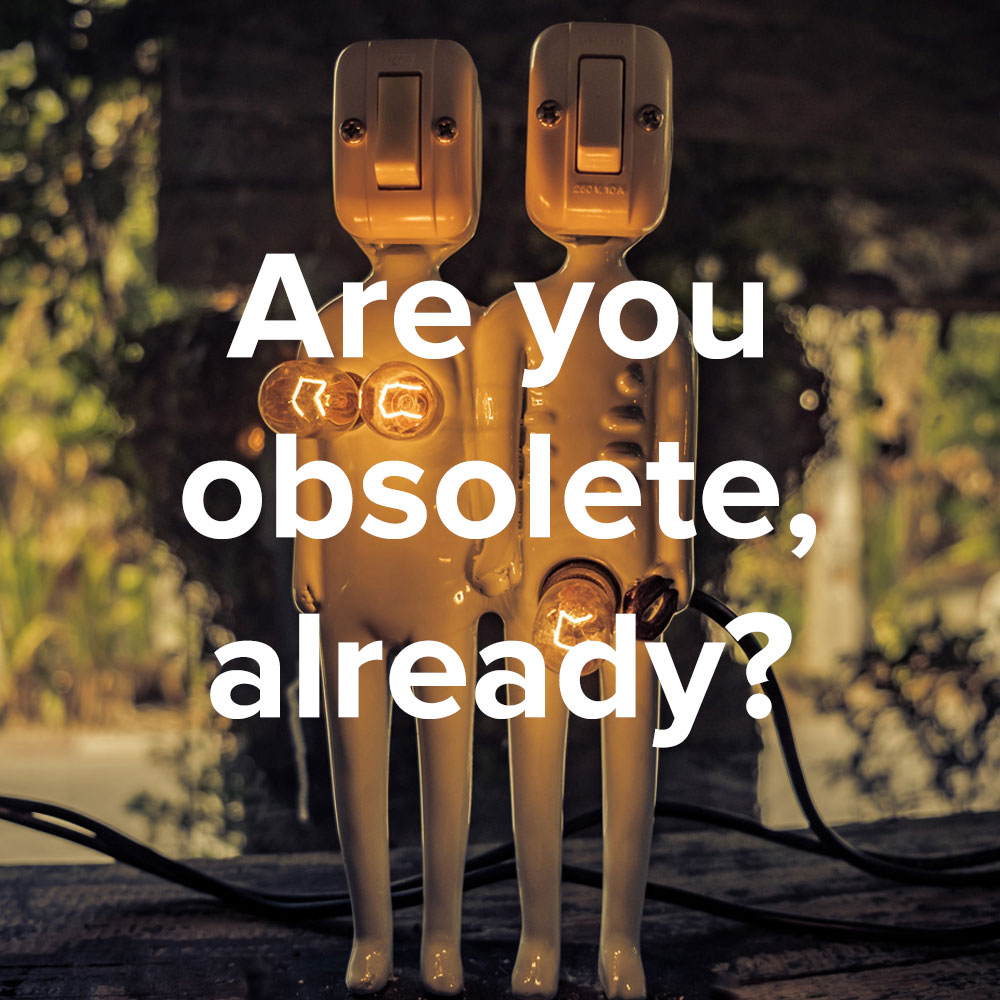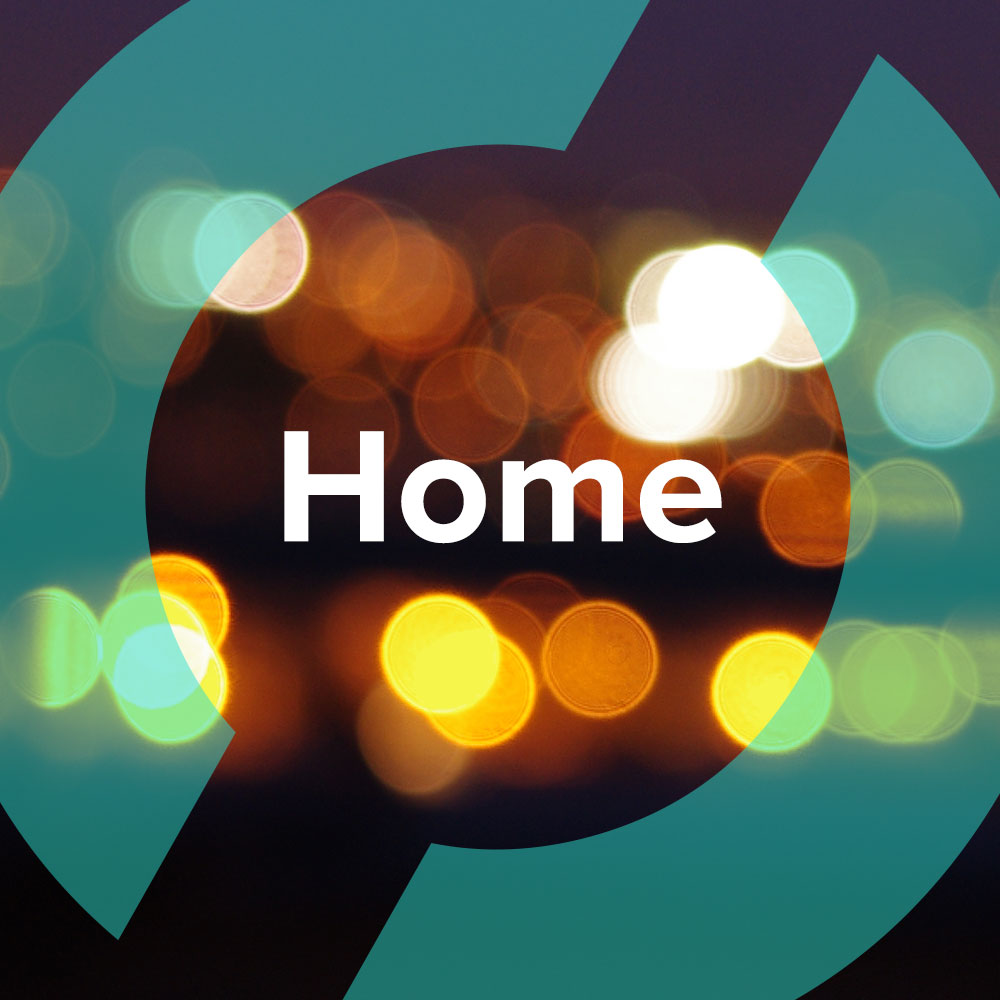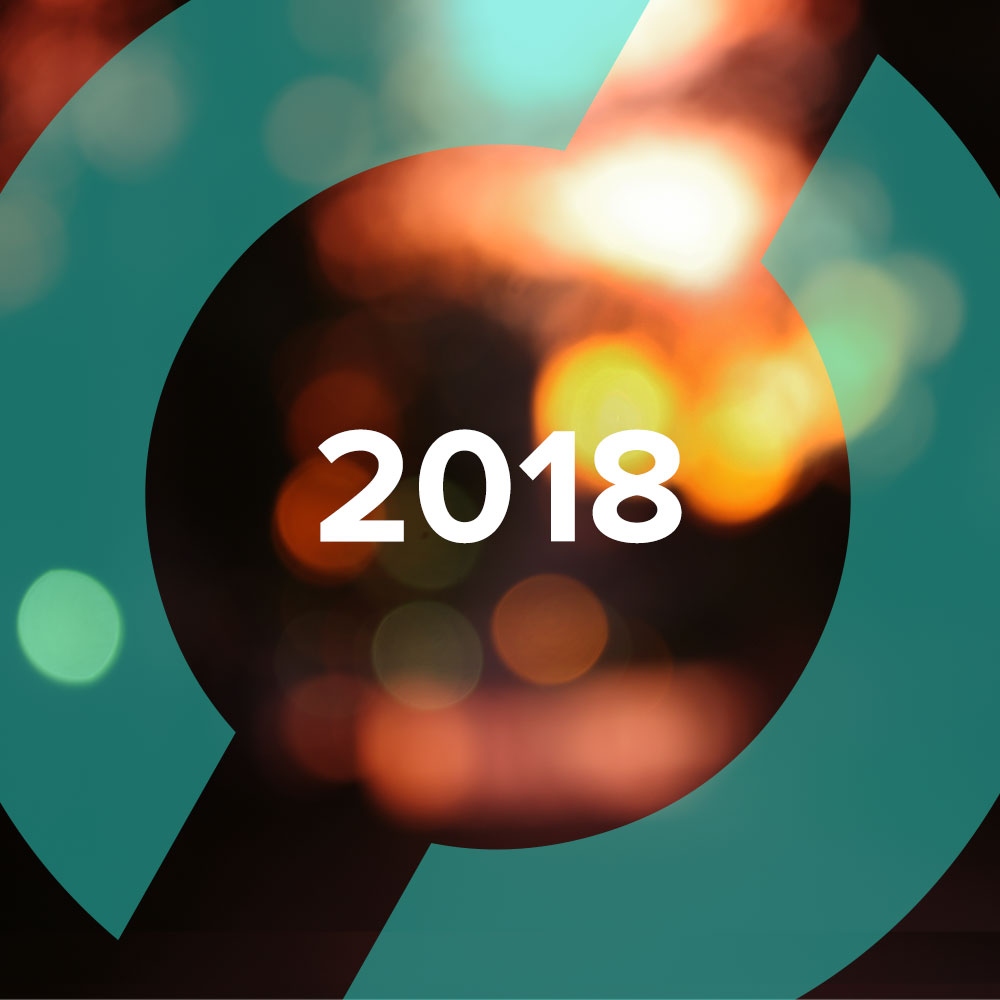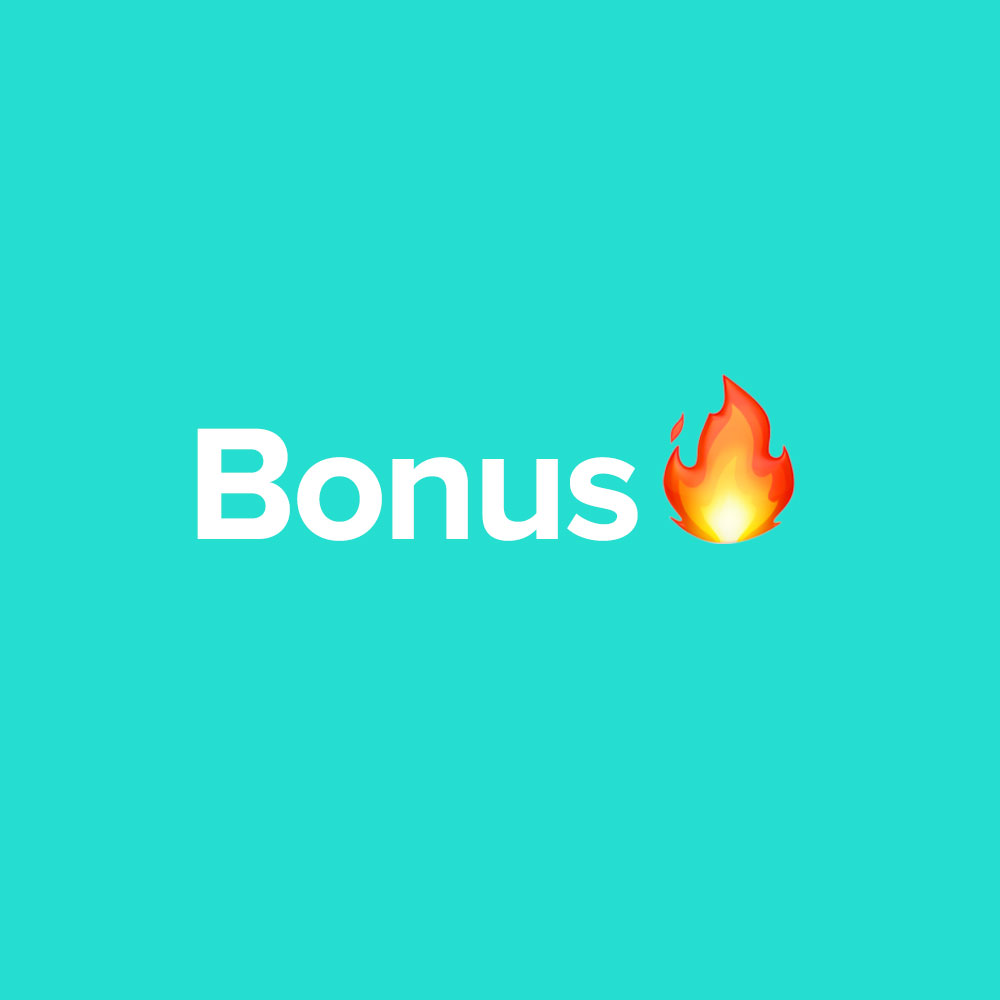“_________”
Laura on Diversity, Inclusion & Female Empowerment.
Mum and dad, when I was about eight, gave me a sticker that said, “Sometimes the best man for a job is a woman.” And I set out to prove them right.
— Laura Jordan-Bambach
CCO at Mr President and SheSays Co-Founder
— Not all that long ago, I had the pleasure of moderating a dinner panel in Dallas, Texas, on behalf of a tech company trying to increase its visibility among local corporate leaders. Some 40 people were there, from high up on the food chain in a wide range of industries, and when the discussion started, it became very clear that the folks in the room were obsessed with marketing to Millennials (for good reason, given the demographics at play). Just as clearly, their efforts were not going particularly well. At one point, I stopped the proceedings and asked for a show of hands: How many of you are Millennials yourselves? One hand went up. No wonder they were struggling. White, black, Asian, male, female, undoubtedly straight, probably L, G and B, if not T and Q+, the group was reasonably well diversified and included, as it were. But were there age disparities? Not so much. You can read all the Psychology Today profiles you want, it’s still really hard to get into the heads of people unlike you.
Diversity and inclusion (D&I) come hard in the corporate world, we all know that. (Even in Themyscira, I’d wager.) The ignorance and/or obstinance make zero sense on a business-case basis (see above), and even less on a moral one. And yet these self-inflicted obstacles to D&I persist. Laura Jordan-Bambach is doing what she can to change this, and that’s a lot. She runs Mr. President, a London-based creative agency with a global purview that made D&I a founding principle. In her “spare” time, she is co-head of SheSays (along with Alessandra Lariu, whose OPEN Topics interviews you can read here and here), an organization that educates and advocates for women creatives, and she’s an active participant in a host of other, similar, activities. On June 21st, during Pride month, Laura hosted our “Is OUT(side) the new IN” panel focused on D&I at Cannes Lions. The panel, an extraordinary partnership between Creative by Collective, Rare by Google and SheSays, had image support provided by Stocksy; all four organizations have D&I in their DNA. We talked about that experience, what led her to that moment, and where she, and the movement, hope to go from here.
You’re an agency superstar, but I get the feeling your agency work is almost a means to an even bigger end, as much as an end in itself? Tell us everything you're doing.
Laura — I’m the Chief Creative Officer and founder at Mr. President, a creative agency in London. I’m also a co-founder of SheSays, which is a global volunteer network to get women into the creative industries, and then apart from that, I do quite a lot of work with other diversity & inclusion organizations. It’s something I care a lot about, and it’s something that I invest a lot of time and personal energy in.
Have D&I issues always meant something to you, or did you come to it recently?
I’ve always been really passionate about the fact that I shouldn’t be excluded just because of my gender. I think my experience as a young girl was that I wasn’t necessarily conventional. I wanted to join the Scouts, not the Girl Guides; that was in the very early ‘80s. My dad and my mum went to the local council in Sydney to try to fight for me to be on Scouts, which didn’t work, but they also really also fought for me to be on an all-boys football team, so I was the only girl in the whole boys’ league for many years, until I was probably 15 or 16, and then the soccer authorities finally said I couldn’t play with the boys anymore. And then I went to a school with 100 boys and 20 girls in my class year.
“If you have different kinds of people regardless of what that diversity is, you’re automatically going to get different ideas that a client hasn’t seen before, ideas that you have not seen before as a creative director, and the ideas that fundamentally are going to be your competitive advantage.”
Panelists Kazuha Okuda of Google Japan, Megan Kelly of Honor Society, Tea Uglow of Google Creative Labs and author/activist Blair Imani, with Laura as moderator. Listen to the panel podcast and read their bios here.
Just curious: American football, Australian Rules football, or the football that the other 98% of the world plays?
Soccer, as we call it in Australia, and I guess in the States. I’m obsessed about football, desperately wanted to play football, and actually one of the great things that I’ve had is very supportive parents. My mum and dad, when I was about eight, gave me a sticker that said, “Sometimes the best man for a job is a woman.” And I set out to prove him right.
And then I became very passionate toward the end of high school about connecting more broadly with feminism and what was going on. There was a really interesting movement called cyberfeminism, which no longer exists as a live movement but it was a really lively time with feminists around the world who were involved in technology and coding and thinking about the future of technology and the future of the net, and where that takes you and the roles of gender in those environments. So I threw myself into that and went to art school, threw myself into exploring this notion of gender and craft versus technology and who is allowed to play with what stuff.
Did you have a mentor, or a hero, or a heroine, who inspired you?
While I was doing that, I was teaching myself a bunch of technology and doing some really interesting pieces of creative technology around gender in general, sexuality and coding and what have you. I met an amazing woman called Rosie Cross, who was the founder of a hyperzine, a magazine and website called geekgirl, and it was one of the first really cool websites on the Internet. Wired cited us as one of the top 20 websites in the world...when there were only about 20 websites in the world.
Anyway, Rosie started geekgirl because it was really hard to find women online involved in all of these practices, working creatively or writing about technology or building technology. She’s a journalist by trade, and she brought me on as her Creative Director. She would go out and find stories, and she would write stuff beautifully, and I would build the website, build the online games, build the CD-roms, pull in my friends and network at art school to make some really cool stuff for her. And that became a big part of what I did the whole way through university, and again, all my artistic practice was continuing to be around gender issues, like online pornography and who owns the gaze and how you can reclaim that.
“The ‘Is OUT(side) the new IN?’ panel was one of the best talks I did for the week at Cannes Lions, and I did a lot. It was a real experience of what collaboration can bring, an amazing event in that everyone who worked there worked as one, and you couldn’t have more different backgrounds between the lot of us. Half of us had never even met each other before, and yet it was such a brilliantly run, really exciting panel. We were all able to share ideas in that spirit of wanting to build something together, rather than knocking each other down.”
What was the agency atmosphere around this like in Australia, and how does that compare to London?
Once I moved here and realized, to my horror, having worked in agencies in Australia, that although Australia is a very macho country, and you have to fight pretty hard as a woman to be respected making work, over here, it’s almost worse, because it’s all unsaid.
Can you elaborate?
Here, it has very much the veneer of everything being equal. When you’d talk to young women here, they would go, ‘of course it’s equal, of course you’ve got equal opportunities, there isn’t a problem.’ But Ale and I, who were running departments in big digital agencies, were seeing that no women were applying for roles in tech, in creative, in design. There weren’t any women there, and so we stopped and thought, why? Women are the majority of students at university in art design schools and advertising schools. Where do they go? They weren’t applying for jobs, just on the other side of graduating, so we thought we would set something up to discuss what the issues might be.
This is the beginning of SheSays? Were there any early revelations that informed the direction you took the group?
Yes. We found that more than anything, networking and conversation are really, really important, and we had underestimated how important it was to get people in the room just to talk. We started doing the events every month, and what we found is that the events that were most successful were the events where we able to up-skill women within those couple of hours, on whatever topic; it could be trends, it could be technology, it could be how to run a brainstorm.
And so by doing that, we ended up turning into a thriving organization with training nights, mentoring, networking nights once a month.
And it’s global, correct?
We’ve grown all around the world. We’re at around 40,000 members now, in around about 40 cities and around 20 countries, all run by amazing volunteers who are helping within the creative agencies to up-skill so people could have better careers and to get those really top jobs.
“You can bring in as many diverse people as you like but you need to invest money in supporting these people and in making them feel heard above and beyond that exercise of ‘oh, you’re a diverse person, you’re the person of color, you’re the woman, you’re the whatever.’”
How does a strong D&I ethic benefit an agency?
I think the difference between a good and a great creative is empathy and actually being able to get into the shoes of audiences that aren’t them. You don’t want to end up in this ghetto I’ve found myself in previously, where you’re a woman so you get stuck in women’s products, because only you know how to talk to women — that’s bullshit to be honest. However, to have a woman on your team who can look at the work and go ‘that doesn’t speak to me,’ is super important. But I think the importance of D&I goes beyond representation. The process of creativity is taking two completely different things that have never been smashed together before and smashing them together to get something new. That is just what creativity is.
If we are all the same, we come from the same place, we have the same background, we have the same gender, the same color, our frame of reference is going to be the same, and therefore, all the ideas that we have are going to be the same as everyone else’s ideas. Whereas if you have different kinds of people regardless of what that diversity is, you’re automatically going to get different ideas that a client hasn’t seen before, ideas that you have not seen before as a creative director, and the ideas that fundamentally are going to be your competitive advantage.
When it comes to D&I in the corporate world, the talk always seems to be around the business case. Why isn’t it ever, hey, let’s just do what’s right? Shouldn’t that be reason enough?
Diversity and inclusion is also the right moral thing to do, but unfortunately, that is not what shifts the majority of businesses. When we set up Mr. President, we set it up specifically with D&I at the core, because that purposefulness makes us a better organization.
Reaching out to people who otherwise wouldn’t have an opportunity, it’s absolutely brilliant to be able to do that. There are very few businesses that are set up like that, and there are very few business leaders who will put money behind it. This is the challenge: Diversity and inclusion costs money, because you are potentially bringing in people with a different frame of reference, who don’t speak advertising language and have a different perception of what good is.
D&I hires might not understand the way the industry works, they might have complex problems because of where they come from societally, or in terms of class, or in terms of whatever’s happened in their background. You need to be able to invest to support those people. You can bring in as many diverse people as you like but you need to invest money in supporting these people and in making them feel heard above and beyond that exercise of ‘oh, you’re a diverse person, you’re the person of color, you’re the woman, you’re the whatever.’ If you’re not investing in allowing people to be free of those labels and contribute properly to a business as themselves, which takes time and cash, then they leave.
“I was talking about whether being outside the norm is a competitive advantage now, but other people read that question differently. Blair Imani felt the question was very much around the issue of using different minority groups, in advertising, for example, and not paying them properly and just do it to be cool.”
“Everyone at our event was very passionate about diversity and inclusion. It was wonderful to see this group of really positive individuals in Cannes, which is not one of the most positive places sometimes for that kind of thing.”
When you came home from Cannes Lions, when you got on the plane, what were you thinking about the “Is OUT(side) the new IN” panel?
I thought it was one of the best talks I did for the week, and I did a lot. I thought it was a real experience of what collaboration can bring, an amazing event in that everyone who worked there worked as one, and you couldn’t have more different backgrounds between the lot of us. Half of us had never even met each other before, and yet it was such a brilliantly run, really exciting panel. We were all able to share ideas in that spirit of wanting to build something together, rather than knocking each other down.
Any surprises?
Well, yes. So we asked a question: “Is OUT(side) the new IN?” I was talking a bit about whether being outside the norm is a competitive advantage now, but other people read that question differently. One panelist felt the question was very much around the issue of using different minority groups, in advertising, for example, and not paying them properly and just trying to do it to be cool, so we got to topics around pinkwashing* and those kinds of themes as well. I came away from it feeling great and having met some incredible, really inspirational people. Everyone there was very much passionate about diversity and inclusion. It was wonderful to see this group of really positive individuals in Cannes, which is not one of the most positive places sometimes for that kind of thing.
Were there men in the audience, or people who identified as male? Were the men as “into it” as the women who attended?
Yes, there were men in the audience. But women asked more questions, because every woman has some experience in being othered and probably feel like they can engage with the question a bit more. But there were plenty of guys there, and I was really chuffed that they came, because as soon as you put women or diversity and inclusion in the context of an event, you usually get only women showing up.
The Concept Behind the Workbook
“The ‘Make It Happen, Let The OUT(side) IN’ workbook was a key part of the event as it encouraged guests to make a plan for action and engage with images of diversity — as a reminder of our common humanity. Because we pride ourselves in creating powerful bonds between brands and people, along with fruitful brand partnerships, we were elated to offer Stocksy the opportunity to share their commitment to diversity and inclusion in Cannes. Make it happen!”
Read Our Stocksy Case Study
Do you run a risk in your movement, just as you are trying for inclusion, of perhaps accidentally creating differences between the first world and the developing world?
That’s a really good question. In terms of SheSays, no, because we are truly global. But in terms of marketing communications and the creative industries, which is by and large not a place of poverty, I would love to bring in more people from different backgrounds. In terms of representing womanhood around the world, SheSays does a pretty reasonable job, but we can always be better. Still, I’m really confident that we are growing in the right way. We’ve got a couple of chapters in South Africa at the moment that are doing really wonderful work around being incredibly inclusive in who they bring in to speak and their audience. But we’re also across the Middle East, in Asia and into places like Eastern Europe.
You’re optimistic, it sounds like.
I’m optimistic that the SheSays network in particular is reaching out and getting better and better at being more inclusive of everyone. However, I think in terms of how it’s going for women, that’s a completely different question. I don’t want to say it’s brilliant anywhere; it’s probably the best in the States out of anywhere. It’s not brilliant in London, it’s certainly not great in Australia. And Europe is appalling, still. That’s where you imagine most of the work has already been done. Things are getting better slowly, but if it was an easy challenge to remove the patriarchy, it would be done by now. All we can do is throw everything we can at it to try to make that change as much as we can.
In the U.S., more women are going to college than men. I would think the sheer demographics are in your favor.
Enrollment in art design and advertising courses in the U.K. is around 50-50, but of those entering the industry afterward, it’s only about 38% women. We lose a big chunk straight away. Then by the time you get to midway in your career, it’s less, and when you get to creative director, it’s only about 13% women, Executive Creative Director about 3%, and Chief Creative Officer about 1%. The issue is not people who are now coming up taking courses. It’s that drop-off at the very beginning of careers, and the steep continued decline.
Why is that occurring?
Young women are taught their entire lives that they have the same opportunity as guys; you can be anything, if you just work hard enough, you’ll succeed. Then they get into the work environment for the first time, and they’re spoken over, they’re ignored, they’re asked to get a cup of coffee, which still happens all the time. It’s a sudden impact.
Women aren’t treated with the same respect as the guys in internship programs. They’re put on the shit briefs, they’re not asked to be part of pitches. If they don’t realize that external forces are causing this—misogyny, the patriarchy, unconscious bias—then they internalize the negativity, feel that they aren’t good enough, and leave. Huge amounts of women do their internships and then disappear. It’s unfortunate that things like the #MeToo movement need to exist, but it has made women aware that yes, you can be whatever you want to be, but you’ll have to fight for it. It’s not because you aren’t as good.
How do you feel about ‘Fleabag’?
Absolutely love it. I love it.
Talk to me about it from the feminist viewpoint because that definitely comes up in the show. I saw more of it in the second season than in the first, but it’s there.
It’s absolutely there, but first, I would like to say it is just an absolutely brilliant show, the best piece of entertainment I’ve seen in such a long time, and obviously it speaks to women, it’s written by a woman. The relationship between her and her sister and all the complications are brilliant insights. But Phoebe Waller-Bridge is not a great female writer, she’s just a great writer. Fleabag isn’t a great feminist show, it’s just a brilliant show.
My wife and I have binge-watched it twice. I noticed that the men in the show, her boyfriends, ran the gamut, from incredibly dense to innately gentle and understanding, so at least there's some hope. Speaking of men, why did you call your agency ‘Mr. President’?
The agency was born in the time of Obama, of optimism about where the advertising industry was going; and we really wanted to stand for something more, for wanting to create a legacy with our work, for being a bit more purposeful with brands, for making change with the work we do. It’s about quality and not volume, about not filling a media plan full of rubbish but finding a purpose for a brand that can last over a long period of time. We try to reflect a world that is better than where we are, in casting or the script writing or whatever it is that we can somehow transform the world a little bit for the better. We’ve developed some enormously impactful global pieces of work that have really made a difference—for example, in 78 countries with Plan International, and here in the U.K. with Stonewall in the LGBTQ+ space—and that makes me happy.
And in Cannes, did you see other examples that really struck you like, wow, that’s just awesome for diversity and inclusion?
What I found interesting in Cannes generally is that there seemed to be a real shift in the work, I mean, almost everything that won was purposeful in some way.
Thank you for your insight Laura and we look forward in continuing our collaboration with you in Cannes and beyond!
|
— * —
Discover our Cannes 🦁 event page to read more essential ideas, see photos and hear audio from our eclectic team, panelists and partners on the OPEN Topic “Is OUT(side) the new IN?”
— * —
|
* The promotion of the gay-friendliness of a corporate or political entity in an attempt to downplay or soften aspects of it considered negative.

